labour market flexibility
description: speed with which labour markets adapt to changes
54 results

Them and Us: How Immigrants and Locals Can Thrive Together
by
Philippe Legrain
Published 14 Oct 2020
While local wages were initially depressed, by 1997 they had recovered to where they would have been without the mass immigration.35 Many European countries have inflexible labour markets, however. High wage floors may price unskilled workers out of work. The near-impossibility of firing workers on permanent contracts who underperform may deter employers from taking the risk of employing those whose productivity is uncertain, such as young people and immigrants.36 It may also create dual labour markets, where some workers enjoy permanent contracts and others are trapped on temporary ones that offer less protection. In inflexible labour markets, there is a higher risk that migrants will end up unemployed.
…
They found that an influx of low-skilled refugees, who mostly did not speak Danish and filled elementary and manual labour positions, caused unskilled and low-skilled locals to shift towards more complex, higher-skilled, non-manual work, thereby boosting their wages, employment and occupational mobility.33 Peri and Foged argue that an influx of low-skilled newcomers ought to have a similarly positive impact in other economies with a flexible labour market, such as the US and the UK. Flexible labour markets can adjust rapidly to even very large inflows of people. After the collapse of the Soviet Union, more than 710,000 Russian Jews emigrated to Israel, increasing its working-age population by over 15 percent in seven years. While they weren’t strictly speaking refugees, they were admitted for political reasons – because Jews everywhere have an automatic right to settle in Israel – not economic ones.
…
Only by using such ludicrous assumptions does leading immigration sceptic George Borjas conclude that newcomers have depressed the wages of US-born high-school dropouts, a flawed finding that has been comprehensively debunked.21 Even if newcomers were perfect substitutes for existing workers and there were no vacancies in the economy, they would harm existing workers only temporarily. In countries with a flexible labour market such as Britain or America, wages would fall; in those with an inflexible one such as Italy, where wages and employment cannot readily adjust, unemployment would rise. But migrants’ arrival would also create opportunities for profitable investment. Once business investment responded to the increased supply of workers and their higher demand for goods and services, the demand for labour would rise, and with it wages and employment.

More: The 10,000-Year Rise of the World Economy
by
Philip Coggan
Published 6 Feb 2020
The former group found it harder and harder to get jobs once they were out of the labour market since employers were reluctant to hire people who had not worked in more than a year. The result was that the available pool of workers was smaller, allowing those still in the labour force to bargain for higher wages. Inflation and unemployment could both be high. This analysis led some economists to argue that the problem in Europe was inflexible labour markets, which made it too expensive to hire workers (because of additional costs and taxes) and too difficult to fire them.9 That led to calls for “structural reform” – policies that allowed employers to hire workers on more flexible contracts (the conservative view) or diluted workers’ rights (the left-wing attitude).
…
These supply-side reforms, as mentioned in the last chapter, often focused on making the labour market more flexible. The theory is that businesses will be reluctant to employ workers if they feel that tax and other social costs are high, and they will be unable to shed labour if conditions deteriorate. In an inflexible labour market, the risk is of a division developing between insiders who have lifetime jobs and outsiders who spend long periods in unemployment; that has been the pattern in Spain and France. Even before they tried to manage the whole economy, governments intervened in industry to promote certain sectors and to block others.
…
Britain moved fastest in the US direction during this period, and eventually had some success; in 2000, the British unemployment rate was 5% while the German rate was 10%.10 This gap prompted Gerhard Schröder, the German Social Democrat chancellor, to push through a series of measures known as the Hartz reforms, which increased the incentives for the unemployed to find work. Since then, German unemployment has been well below the European average, although that may be down to the country’s success in exporting capital goods to China and the emerging markets, rather than the reforms themselves.11 Attempts to make the labour market flexible led to a long argument about whether it was better to reduce unemployment, even if the only jobs available had lower wages and reduced rights. In the US, such jobs were found in the fast-food sector or in call centres. The problem was tied up with the general decline in manufacturing employment (see Chapter 7), which meant that most new jobs were created in the service sector.

The Precariat: The New Dangerous Class
by
Guy Standing
Published 27 Feb 2011
For a start, most who find themselves in temporary jobs are close to being in the precariat because they have tenuous relations of production, low incomes compared THE PRECARIAT 15 with others doing similar work and low opportunity in occupational terms. The number with a temporary tag to their job has grown enormously in the flexible labour market era. In a few countries, such as the United Kingdom, restrictive definitions of what constitutes temporary work have made it hard to identify the number in jobs without employment protection. But in most countries, the statistics show that the number and share of national labour forces in temporary statuses have been rising sharply over the past three decades.
…
If human beings have a predisposition to trust and to cooperate, as social psychologists surmise, then an environment of infinite flexibility and insecurity must jeopardise any sense of cooperation or moral consensus (Haidt, 2006; Hauser, 2006). We do what we can get away with, acting opportunistically, always on the edge of being amoral. This is easier to rationalise when every day we hear of the elite and celebrities breaking moral codes with impunity and when there is no shadow of the future in our dealings. In a flexible labour market, individuals fear making or being locked into long-term behavioural commitments, since they may involve costs and actions that could not be subject to desirable reciprocities. The young will not wish to be tied by economic commitments to their parents if they fear they might have to support them long into old age, with a shrinking state and increasing longevity raising the prospective costs of doing so.
…
In the United Kingdom, flexible wages and precarious jobs combined with high unemployment led working-class youths, in particular, to embrace ‘the dole’ as authenticating their disdain of the lousy jobs on offer, a rejection caught by pop bands such as UB40, whose name (unemployment benefit form 40) and band members were drawn from the dole queues. This may have affected only a minority of youths growing up in declining working-class areas, but it helped change official attitudes, providing an excuse to resurrect an image of the idle irresponsible poor. The real problem was the flexible labour market. If wages are driven down and more jobs become precarious, unemployment benefits become relatively more attractive. In recognition, governments in industrialised countries lowered benefits, made them harder to obtain and harder to retain. That did away with the insurance character and the avowed purpose of providing an 46 THE PRECARIAT adequate income to compensate for temporary ‘interruption of earning power’, as William Beveridge (1942: 7) had put it.

The Global Minotaur
by
Yanis Varoufakis
and
Paul Mason
Published 4 Jul 2015
Before the Crash of 2008, Europe’s Minotaur envy (see the start of chapter 5) manifested itself in long treatises on the sluggishness of continental growth and the superiority of the Anglo-Celtic model. In reality, the lethargic European growth rates, which did decline during every single one of the previous four decades, had nothing to do with inflexible labour markets, an arthritic financial system or overgenerous social security. They were due, simply, to the way in which most of Europe was falling under the spell of German surpluses. The only relief Europe’s deficit countries had during the Global Minotaur’s halcyon days came from net exports to the United States.
…
Cultural origins In September 2008, Europeans looked smugly over the pond, shaking their heads with a self-serving conviction that the Anglo-Celts, at long last, were getting their comeuppance. After years and years of being lectured on the superiority of the Anglo-Celtic model, on the advantages of flexible labour markets, on how inane it was to think that Europe could retain a generous social welfare net in the era of globalization, on the wonders of an aggressively atomistic entrepreneurial culture, on the wizardry of Wall Street and on the brilliance of the post-Big Bang City of London, the news of the Crash, its sights and sounds as they were beamed all over the world, filled the European heart with an ambiguous mix of Schadenfreude and fear.

Brave New World of Work
by
Ulrich Beck
Published 15 Jan 2000
My answer is that, after the collapse of the bipolar world order that rested upon the opposition between communism and capitalism, the United States model was asserted as the model of ‘Western modernization’ with worldwide reach, indeed dominance. For many European countries, and especially for European corporations and business representatives, it is also the model of a flexible labour market – and one against which a European path, if there is one, has to differentiate itself. The US example also allows us to study, at their most advanced stage, the social and political consequences of the flexibilization of working time and location and the labour contract, and thus of the risk regime itself.
…
The disjunction between the various shifts – in women's expectations, in the cooperation of the labour market and in the patterns of the home – is causing enormous concern. … On a political level there is little or no attempt to reconcile these tensions. One agenda exhorts us all to believe in the wonders of flexible labour markets, portfolio lives and transferable skills, while another howls about the destruction of the family and the need for more and better parenting. … The crucial interrelationships and inevitable contradictions between these two issues are rarely considered. The political rhetoric prefers not to see the possible inconsistencies.102 So, once again, rethinking and reorganizing the relationship be-tween multiple work, time and money is the major challenge for a realistic policy of civil labour.
…
Paid employment is becoming precarious; the foundations of the social-welfare state are collapsing; normal life-stories are breaking up into fragments; old age poverty is programmed in advance; and the growing demands on welfare protection cannot be met from the empty coffers of local authorities. ‘Labour market flexibility’ has become a political mantra. The orthodox defensive strategies, then, are themselves thrown onto the defensive. Calls are made everywhere for greater ‘flexibility’ – or, in other words, that employers should be able to fire employees with less difficulty. Flexibility also means a redistribution of risks away from the state and the economy towards the individual.
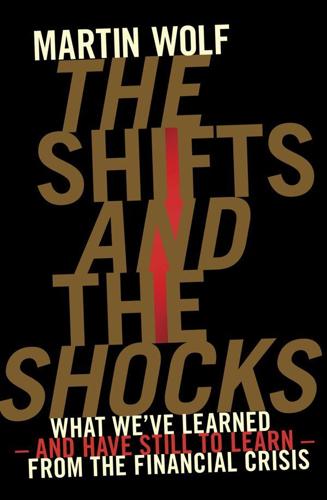
The Shifts and the Shocks: What We've Learned--And Have Still to Learn--From the Financial Crisis
by
Martin Wolf
Published 24 Nov 2015
This was partly because of their strong economies (notably in Spain), which pushed up nominal wages, and partly because their labour markets were relatively inflexible and productivity growth was correspondingly weak (as in Greece, Italy, Portugal and Spain). The most important reason for the relatively inflexible labour markets of southern Europe was legislation, which made it extremely difficult to lay off long-term workers. Particularly large losses in competitiveness occurred in Spain, Italy and Greece (see Figure 10). Ireland, on the other hand, suffered no loss in competitiveness, because of fast productivity growth in its output of tradeable goods and services. Ireland has a flexible labour market and relies for exports on foreign companies, mostly American, with access to state-of-the-art technology.
…
The international gold standard is just a particularly rigid form of fixed exchange-rate arrangement. If one wants to understand the problems of such arrangements, in modern circumstances, one need merely look at what happened in the 1920s and 1930s and more recently in the Eurozone. Fixed exchange rates are a recipe for instability. For small open economies with flexible labour markets, such as Hong Kong or the Baltic states, this may be better than the instability generated by floating exchange rates. For larger economies the idea that the exchange rate should dictate monetary policy is less sensible. It is also inconceivable that the US would follow such a rule: it did not do so after creation of the Federal Reserve in 1913, even though the dollar was notionally tied to gold until 1971.

23 Things They Don't Tell You About Capitalism
by
Ha-Joon Chang
Published 1 Jan 2010
Between the 1990s and the outbreak of the 2008 crisis, even though unemployment fell, the chance of involuntary job termination increased, the share of short-term jobs rose, jobs were more frequently redefined and work intensified for many jobs – all as a result of changes in labour market regulations that were intended to increase labour market flexibility and thus economic efficiency. The free-market policy package, often known as the neo-liberal policy package, emphasizes lower inflation, greater capital mobility and greater job insecurity (euphemistically called greater labour market flexibility), essentially because it is mainly geared towards the interests of the holders of financial assets. Inflation control is emphasized because many financial assets have nominally fixed rates of return, so inflation reduces their real returns.
…
After the 1997 financial crisis that ended the country’s ‘miracle years’, Korea abandoned its interventionist, paternalistic economic system and embraced market liberalism that emphasizes maximum competition. Job security has been drastically reduced in the name of greater labour market flexibility. Millions of workers have been forced into temporary jobs. Ironically enough, even before the crisis, the country had one of the most flexible labour markets in the rich world, with one of the highest ratios of workers without a permanent contract at around 50 per cent. The recent liberalization has pushed the ratio up even higher – to around 60 per cent. Moreover, even those with permanent contracts now suffer from heightened job insecurity.
…
There have been a huge number of financial crises, including the 2008 global financial crisis, destroying the lives of many through personal indebtedness, bankruptcy and unemployment. An excessive focus on inflation has distracted our attention away from issues of full employment and economic growth. Employment has been made more unstable in the name of ‘labour market flexibility’, destabilizing many people’s lives. Despite the assertion that price stability is the precondition of growth, the policies that were intended to bring lower inflation have produced only anaemic growth since the 1990s, when inflation is supposed to have finally been tamed. That’s where the money is – or is it?

The End of Alchemy: Money, Banking and the Future of the Global Economy
by
Mervyn King
Published 3 Mar 2016
It soon became clear that the fall in real wages implied by the rise in oil prices could not be avoided, and that attempts to do so would create unemployment which, if it persisted, would erode skills and lead more people to drop out of the labour force altogether. The only way to reduce the growing level of unemployment, especially in Europe, with its inflexible labour markets, was to lower the ‘natural’ rate of unemployment as determined by the supply and demand for labour by introducing major reforms. They included legislation to rein in union power, reductions in unemployment benefits relative to average wages, and measures to reduce job protection by introducing temporary labour contracts.27 Stability-oriented macroeconomic policies could then ensure low and stable inflation.
…
If one country wants to raise rates – because demand is strong and might push up inflation – and another wants to lower rates – because it is facing weak demand, pushing inflation down – then tensions will arise between the members of a currency union. Such ‘asymmetric shocks’ to demand require, within the union, a flexible labour market encompassing the entire area so that labour can move easily from a country with little demand for it to a country where demand is high. In contrast, retaining a separate currency means that it is possible to use movements in the exchange rate to coordinate in terms of foreign currency the changes in domestic wages and prices that are necessary following shocks to competitiveness, and to respond to a local fall in demand.

The Corruption of Capitalism: Why Rentiers Thrive and Work Does Not Pay
by
Guy Standing
Published 13 Jul 2016
Blair and Brown openly admired her. But, soon after the end of the Labour government, commentators wondered if the Labour landslide of 1997 was analogous to the Liberal landslide of 1906, after which the Liberals dwindled into insignificance. In the USA, Bill Clinton’s Third Way variant also opted for flexible labour markets that promised growing inequality and insecurity. The defining moment came in 1996 when he signed the Personal Responsibility and Work Opportunity Reconciliation Act to fulfil his 1992 campaign pledge to ‘end welfare as we know it’. Drawn up by Republicans in Congress, the Act was based on welfare reforms introduced in Wisconsin by its Republican governor and was profoundly regressive, introducing time limits for entitlement to benefits and extending workfare – forcing people into poverty-wage jobs.
…
As a result, governments have aimed to influence the ‘natural’ rate of unemployment or the NAIRU (non-accelerating inflation rate of unemployment), the rate at which inflationary pressures are held in check. The so-called Phillips curve has been used by central banks in operating monetary policy, and by governments to justify policies increasing labour market flexibility, on the grounds that more flexibility makes for a better unemployment–inflation trade-off. However, in recent years, falling unemployment has not put much upward pressure on wages. One explanation is that increased wage flexibility means that firms cut wages rather than jobs in recessions, which some politicians think is preferable.49 Yet in addition to causing hardship, lower wages have not bounced back in subsequent expansions.
…
In industrialised countries in the 1980s and 1990s, the neo-liberal structural adjustment strategy took the form of ‘supply-side economics’. The World Bank and IMF were joined by the Organisation for Economic Co-operation and Development (OECD) and fledgling European Community institutions in pushing privatisation, labour market flexibility, lower public spending and so on. This was to lead to more inequality and more unemployment. Those bodies slowly became more intrusive and, by the time of the 2008 financial crisis, in alliance with the European Central Bank, they were able to dictate reforms to struggling European Union members, including Spain, Portugal, Ireland and Greece.

Unhappy Union: How the Euro Crisis - and Europe - Can Be Fixed
by
John Peet
,
Anton La Guardia
and
The Economist
Published 15 Feb 2014
The IMF’s deputy managing director, Nemat Shafik, once memorably compared the process of recovering competitiveness to painting a house: If you have an exchange rate, you can move your brush back and forth. If you don’t have an exchange rate, you have to move the whole house. Successful adjustment requires flexible labour markets and an open economy that can export its way back to growth, as well as a population willing to put up with the pain. Greece had none of these: it was a closed, rigid economy and its politics was polarised by a history of occupation, civil war and military rule. As such, Greece was the most recalcitrant of the euro-zone countries to be rescued.
…
Its priority was the finalisation of the treaty change to create a permanent bail-out fund, to be known as the European Stability Mechanism (ESM). This was followed by moves to encourage more structural reforms. Over two summits in March 2011 leaders agreed to a voluntary pact to promote labour-market flexibility and other action. It was first known as the Competitiveness Pact, then the Pact for the Euro and, in its final form, the Euro Plus Pact. Once a year, countries would make reform commitments that would be scrutinised by peers. Some countries, like Belgium, disliked the challenge to their wage-indexation systems; others, like Ireland, worried about the pressure to raise their low corporate taxes.
…
It urged him to take “immediate and bold” measures to speed up Italy’s deficit-cutting and balance the budget by 2013, a year earlier than planned. It also set out a list of “significant measures to enhance potential growth”, including the liberalisation of professional services and more labour-market flexibility. In the longer term there had to be a constitutional reform to enshrine fiscal rules, an overhaul of the public administration and the abolition of costly layers of government. A similar letter was sent to Spain’s prime minister, José Luis Rodríguez Zapatero, though its contents did not leak for two years.
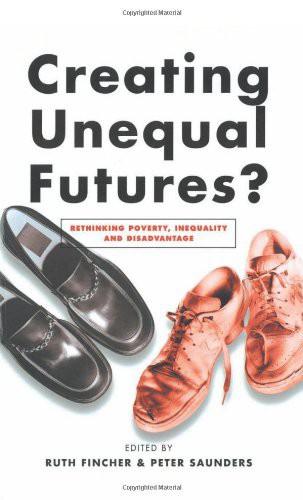
Creating Unequal Futures?: Rethinking Poverty, Inequality and Disadvantage
by
Ruth Fincher
and
Peter Saunders
Published 1 Jul 2001
Both versions, however, share a common vision for the future: one in which poverty created by the labour market is allowed to increase. This chapter argues that such a vision is impoverished for two reasons. At the heart of the vision is the desire to create a large low-wage sector in Australia. This is regarded as a sign of a ‘flexible’ labour market. We argue that this is not only undesirable, but it is unnecessary. Second, the economics behind this vision is impoverished analytically. Australia is currently on a trajectory of growing and entrenched inequality. Recycling ideas from the United States and the United Kingdom is part of the problem, not part of the solution.
…
The last two decades in Australia have shown that most new job opportunities go to new labour market entrants and to the more recently unemployed. It is clear that labour market programs—which involve targeted job subsidies, training and direct public sector job creation—can make a difference to the fate of the long-term unemployed (Stretton and Chapman 1990; Stromback et al. 1998). A more ‘flexible’ labour market, by itself, does not improve their competitive edge. The most likely outcome of steep reductions in wages is not a shift from one compartment (unemployment) to another (employment), but rather a more rapid expansion in low-paid precarious employment. The result, in brief, would be an expansion in labour market disadvantage for most workers at the bottom of the labour market.
…
In other words, family poverty would increase with cuts of that magnitude because any improvement in unemployment would be insufficient to offset the lost income. Only increased social security transfers could alleviate that level of family poverty. Yet the social security system would itself come under pressure once a more ‘flexible’ labour market became entrenched. This would happen because a wage cut in the order of 30 per cent would have a major impact on the monetary gap between low-wage work and unemployment benefits. Unless unemployment and related benefits were also cut by a large amount, significant poverty traps would emerge.

Hard Times: The Divisive Toll of the Economic Slump
by
Tom Clark
and
Anthony Heath
Published 23 Jun 2014
Across most dimensions, the OECD ranks America close to the bottom of the table of its 34 members (frequently actually bottom); Britain is generally only a place or two higher than the US.34 Reviewing the shielding of permanent staff from being singled out for the sack, the OECD comments: ‘the US stands out as the least regulated country’.35 The relatively minimal rights of this sort enjoyed by British and American workers are in marked contrast to the stronger protections enjoyed in France and Germany.36 Britain and the US offer more typical protection against collective redundancies, but the light-touch (and sometimes non-existent) regulation of fixed-term contractors and agency workers reinforces the caricature of the Anglo-Saxon labour market as a realm where bosses are free to do as they will.37 Of course, flexibility to hire and fire at will does not necessarily mean that workers will end up more insecure. After all, the avowed basis of the flexible labour market agenda is to give employers confidence to take on more workers. Where businesses are rendered unviable by onerous regulation then, in the end, all workers will feel the chill; protection for people in permanent jobs would then come at the expense of those with less-secure work or no job at all.
…
The contrasting well-being of the newly re-employed in Britain and America is one of the most important transatlantic differences we have discovered. The data does not in itself prove why things should be so different, but there is one fairly obvious place to look for answers: the welfare state and associated labour market protections. As we have emphasised, flexible labour markets are very much a shared Anglo-American approach, but it is an approach that has gone further in the US, where there are more jobs with less protection. Taking minimum wage rates as an example of how much less, at autumn 2013 rates and currency conversions, the UK pay floor of £6.31 an hour is worth $9.78, considerably more than the federal minimum of $7.25 an hour that applies in the US, even though it is the richer country.
…
A recent cross-national analysis of European data on incomes, inequality and employment protection in the Economic Journal, a publication ordinarily marked by academic caution and caveat, concluded: ‘The results are startling and fairly unambiguous: in countries with strictly regulated labour markets, the distribution of household incomes is significantly more equal than in those countries with flexible labour markets.’11 In this book we have touched on suggestive evidence of the ‘social slump’ playing out less divisively in France and Germany than in the UK and the US. Here we can spot an important clue as to why that might be. An even more obvious way to tame financial insecurity than employment regulation is directly, through the maintenance – or in America's case the creation – of a decent safety net.
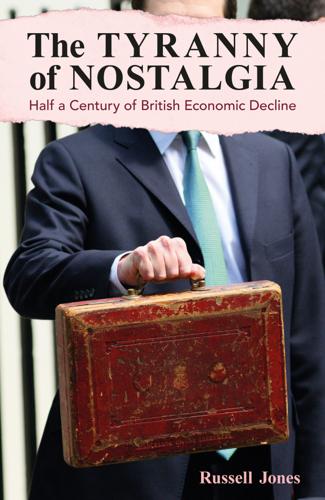
The Tyranny of Nostalgia: Half a Century of British Economic Decline
by
Russell Jones
Published 15 Jan 2023
Meanwhile, the young were increasingly being priced out of the housing market. What is also clear is that the rate of growth of median real earnings began to slow in the 2000s. Indeed, median real incomes stagnated between 2003 and 2008, in a period during which real GDP grew by more than 10%. The economy had relatively full employment and a flexible labour market, but many of the jobs that were being created were lower-paying jobs. Around a fifth of UK workers earned less than two-thirds of the median wage compared with around one in ten across the rest of Europe, and it was the sectors where the trade unions were least in evidence where the low paid were congregated.
…
The OBR continues to assume that the new trading relationship between the UK and the EU will reduce long-run productivity by 4% relative to remaining in the EU, and that around two-fifths of the 4% impact (i.e. 1.6 percentage points) had already occurred by the time the EU–UK Trade and Cooperation Agreement came into force as a result of uncertainty weighing on investment and capital deepening. FDI is generally seen as a particularly fruitful source of technological advancement and best industrial practice, and until the Brexit vote the UK was one of the largest recipients of such inflows, with about 40% coming from other EU countries. The single market and the UK’s flexible labour market made it an attractive destination for multinational companies. However, FDI has slumped since the Brexit referendum, from all major source markets and especially where supply chains are concerned. The year 2016 witnessed a record for FDI due to a few high-value mergers and acquisitions, but the number of inward FDI deals fell by more than 9% in 2017–18 and by another 16% in 2018–19.
…
The cabinet was brought into the discussion only weeks later, and then cursorily. When it was published in its entirety in early June, the assessment ran to around 250 pages and was backed up by no fewer than eighteen supporting documents on subjects such as the monetary policy transmission mechanism, the cost of capital, labour market flexibility, and the euro area’s monetary and fiscal frameworks. In addition, and in contrast to the provisional 1997 appraisal, the Treasury also looked at the exchange rate. It was a remarkably thorough and detailed body of work. Indeed, it was at the time the most extensive economic policy review that had ever been conducted in the UK, and one that other countries that took the decision to join the euro only to subsequently suffer chronic macro instability during and after the GFC would have been wise to replicate.23 At the very least, the Treasury’s paper on ‘Modelling shocks and adjustment mechanisms in EMU’ should have been required reading for the single currency’s more peripheral members.24 The Treasury’s overall conclusion was that the case for joining the euro in principle remained strong.

Them And Us: Politics, Greed And Inequality - Why We Need A Fair Society
by
Will Hutton
Published 30 Sep 2010
Between 1979 and 1997, Margaret Thatcher and the Conservative Party felt that reducing trade union power and opening up the labour market was the single most important factor in the creation of a more open-access society. They also believed that lowering the top rate of tax would bring forth a new wave of entrepreneurship. Thatcher certainly succeeded in creating a more open, flexible labour market, which New Labour largely preserved. But entrepreneurship remained elusive beyond the spivvery of the City, while the cumulative impact of the Tories’ tax and benefit reforms was astonishingly regressive. Britain moved from being one of Europe’s most equal societies to one of its least equal within the space of twenty years.
…
Debt and debt-related activity – construction and real estate services – had propelled half the growth since Labour had come to power, while manufacturing’s share of output had shrunk by two-fifths (to around 12 per cent) over the same period, a faster decline than in any other leading industrialised country.1 The politicians were enthusiastic cheerleaders throughout all of this. Finance was where innovation and entrepreneurship flowered, Prime Minister Blair and Chancellor Brown jointly proclaimed in a competition with the then Conservative opposition to fête the City of London. The factors that helped financial services – light-touch regulation, low taxes and labour market flexibility – allegedly helped all business. Governments should limit their intervention. Nor should they or society be concerned about City pay that was rising beyond the dreams of avarice because that was merely the price of global success. In the glory days of the boom, Britain was urged to enjoy the spiralling property prices and the rising consumption that came in the wake of the City’s credit creation and wheeler-dealing.
…
The best that could be done was to construct a broad-based, shallow coalition that favoured building investment in society and the country’s infrastructure with the help of private sector finance, taking the edge off inequality with initiatives like tax credits and the minimum wage, and enlisting the private sector to improve public sector efficiency. Trade unions would be given rights for recognition, but nothing was to obstruct labour market flexibility. The rich, the City and the business sector would continue to operate as they had under the Tories. Peter Mandelson, Blair’s right-hand man who would end up as a highly interventionist Business Secretary under Prime Minister Gordon Brown, claimed to be totally relaxed about people becoming filthy rich.
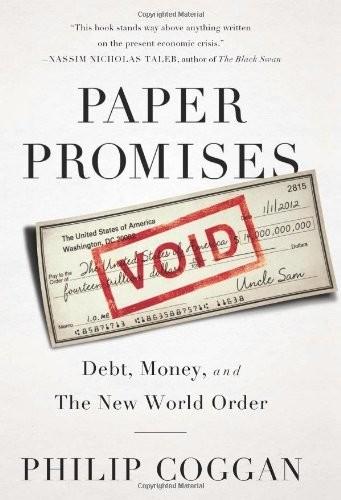
Paper Promises
by
Philip Coggan
Published 1 Dec 2011
Spain’s socialist government, somewhat reluctantly, started to take action once it was clear that the markets were concerned about the budget deficit, which hit 11 per cent of GDP in 2009. Civil service pay was cut and VAT increased, despite street protests and a general strike. But unlike Ireland, Spain has an inflexible labour market. Labour laws make it difficult to fire workers, dividing the economy into insiders with protected jobs and outsiders without them. In mid-2011, unemployment was 21 per cent. Attempts to reform the labour market have been made but face considerable union opposition. Portugal did not enjoy the housing booms experienced by Ireland or Spain, nor is its banking system excessively large (senior bank debt is 30 per cent of GDP, on a par with Germany’s).

A Brief History of Neoliberalism
by
David Harvey
Published 2 Jan 1995
The IMF and the World Bank thereafter became centres for the propagation and enforcement of ‘free market fundamentalism’ and neoliberal orthodoxy. In return for debt rescheduling, indebted countries were required to implement institutional reforms, such as cuts in welfare expenditures, more flexible labour market laws, and privatization. Thus was ‘structural adjustment’ invented. Mexico was one of the first states drawn into what was going to become a growing column of neoliberal state apparatuses worldwide.24 What the Mexico case demonstrated, however, was a key difference between liberal and neoliberal practice: under the former, lenders take the losses that arise from bad investment decisions, while under the latter the borrowers are forced by state and international powers to take on board the cost of debt repayment no matter what the consequences for the livelihood and well-being of the local population.
…
They not only insisted on budgetary austerity; they insisted, for the first time, on broad neoliberal reforms, such as privatization, reorganization of the financial system in ways more consistent with foreign interests, the opening of internal markets to foreign capital, lowering tariff barriers, and the construction of more flexible labour markets. In 1984 the World Bank, for the first time in its history, granted a loan to a country in return for structural neoliberal reforms. De la Madrid then opened Mexico to the global economy by joining GATT and implementing an austerity programme. The effects were wrenching: From 1983 to 1988 Mexico’s per capita income fell at a rate of 5 per cent per year; the value of workers’ real wages fell between 40 per cent and 50 per cent; inflation, which had oscillated between 3 and 4 per cent per year in the 1960s, had gone up to the mid teens after 1976, and surpassed 100 per cent in several of those years… At the same time, due to government fiscal problems and the re-orientation of the country’s governing economic model, state expenditure on public goods declined.
…
But Park’s assassination (by his own director of intelligence) in 1979, followed by a brutal massacre of civilian protesters in Kwangju in 1980, sparked a popular movement of students, citizens, and workers for democratization. This was formally achieved in 1987. Wages then rose as unions consolidated their power in the face of continuing governmental repression. Employers wanted more flexible labour markets, but successive governments found this hard to deliver. The formation and legalization of the democratic Korean Confederation of Trade Unions in 1995 confirmed the growing power of organized labour.30 Figure 4.4 South Korea goes abroad: foreign direct investment, 2000 Source: Dicken, Global Shift.
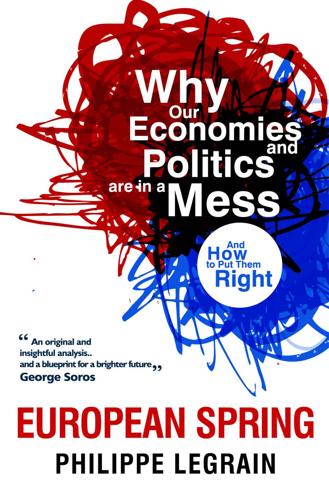
European Spring: Why Our Economies and Politics Are in a Mess - and How to Put Them Right
by
Philippe Legrain
Published 22 Apr 2014
Britain has pinned its hopes on easy money and a cheap currency while doing little to remedy the economy’s longstanding structural weaknesses: its underinvestment in skills, infrastructure, housing and business capital more generally and its unhealthy reliance on a dysfunctional financial sector. In effect, the British government has assumed that low interest rates and QE would together boost investment and that a weaker currency and flexible labour markets would automatically shift the economy towards broad-based export-led growth. But in practice, banks have refused to lend, companies have been loath to invest and exports have stagnated, as Chapter 7 explains. When growth finally resumed in 2013, it was again based almost exclusively on higher consumption by debt-laden households.
…
Mature economies can only grow if workers and capital are deployed to more productive uses – which means they need to stop doing less productive things. They need both the freedom and the capacity to adapt. Reforms that remove regulatory restrictions are necessary but not sufficient. Thus while Britain has admirably flexible labour markets, its narrow skills base, increasing restrictions on immigration, lack of small-business finance and inadequate infrastructure prevent it from being as adaptable as it ought to be. An economy with a diversity of firms, skills and perspectives is better able to cope with change. Britain’s overreliance on finance and Germany’s overdependence on manufacturing seem like strengths when demand is booming, but leave them very vulnerable to a downturn – unless they can quickly shift resources to other areas.
…
Last but not least, the willingness to adapt is also crucial. People must be prepared to move to where the jobs are. Managers must be ready to shed unproductive business lines and invest in new ones. Flailing owners must be willing to sell up. Society as a whole must be willing to embrace change and take risks. Flexible labour markets often get a bad rap because they are associated with swapping good, secure jobs for inferior, insecure ones. Eurozone policymakers have made matters worse by single-mindedly and self-defeatingly pursuing wage cuts to boost “competitiveness”. But the point of making labour markets more adaptable is not to destroy jobs and drive down wages, it is to create new jobs and enable productivity gains that boost wages.

Battling Eight Giants: Basic Income Now
by
Guy Standing
Published 19 Mar 2020
And its divisiveness and its impact on insecurity have been a factor in the growth of support for populist politics and the erosion of social solidarity. These are strong claims. But the evidence in all respects is also strong. The problems started with decisions in the 1980s and 1990s to combine flexible labour markets, which in themselves increased economic insecurity, with a shift to greater reliance on means-testing. Means-testing is intended to target state benefits on those most in need, designated as ‘the poor’. On the face of it, this sounds reasonable. But it involves ‘tests’ to determine who is poor and who is not, which is where the problems arise.
…
In sum, a basic income would not depress wages, whereas existing tax credits do. (9) The National Minimum Wage will take care of ‘working poverty’. The statutory National Minimum Wage (dubbed the National Living Wage for workers aged 25 and over) is a moral standard setter. But not too much should be expected from the minimum wage in the flexible labour market of the twenty-first century. It has limited reach to the precariat: for instance, employers can offset minimum wage increases by cutting hours worked or reducing other benefits. However, it would complement a basic income. Enforcement has been a problem. Every year since the minimum wage was introduced in Britain, hundreds of thousands of workers entitled to it have been paid less, and that has persisted for two decades, even though for much of that time there was a government strongly supporting it.

Birth of the Euro
by
Otmar Issing
Published 20 Oct 2008
There is no skirting the conclusion that the concept of a European social union, with wide-ranging rights that cement labour market rigidities rather than removing them, is not compatible with the principles of a stability-oriented monetary union. Under such circumstances, the single monetary policy would be unable to yield its potential benefits, and macroeconomic tensions would inevitably arise. This risk is all the greater, the more that structural unemployment – due precisely to such a lack of labour market flexibility – increases. Even leaving these consequences aside, enshrining extensive social rights at the Community level would inherently tend to be associated with transfer payments between member states, with the risk of creating deep-seated political tensions. In reality, the opposition between social concerns and a policy of stable money that is repeatedly talked up in political debate does not exist.
…
Following the successful start and the stability demonstrated in all the years since, this scenario would see policymakers making every effort to secure the full benefits of the single currency. To this end, there would be full compliance with the rules of the Stability and Growth Pact. The internal market would be quickly completed and the reforms committed to under the Lisbon Agenda would be fully implemented. The resultant greater market flexibility, especially labour market flexibility, would vastly improve the ability to adjust to economic shocks. Under such circumstances, the single monetary policy would yield its full benefits, with the principle of ‘one size fits all’ applying to the fullest extent possible. Over and above the active shaping of the environment in which monetary 242 • Europe at the crossroads policy operates, this scenario presupposes that policy-makers desist from pursuing any projects – of the ‘social union’ sort – that would jeopardise the success of EMU.
…
B. 41 Blinder, Alan 34–5, 40–1 Boyer, Miguel 10 Bretton Woods system 5 Brown, Gordon, as Chancellor of the Exchequer 58 budget deficits 193 (1990–8) 15 fig. 2 convergence criterion 17–18 limits on overall EU 196 reference values 196–8 budget policies automatic stabilisers 195, 198, 204 of euro area member states 55, 195 sustainable 196 Bulgaria 76 business cycles, synchronisation in euro area 209 fig. 14 Canada, exchange rate intervention 175 capital, free movement of 7, 8, 11 245 246 • Index central planning, vs. market economy 61–2, 75, 222 centralisation 30, 38, 234 Committee of Central Bank Governors 9–10 common market principles 7–8, 32 communication, and cross-checking 111–14 communication policy, of ECB 60, 72–4, 86–7, 116, 146, 156–69, 227 consensus principle 153–6, 160–3 Convention on the Future of Europe 224, 231 convergence and fixed exchange rates 6 in monetary policy instruments of national central banks 119–20, 134 process 13–20, 33 convergence criteria 11–12, 13–17, 48, 220 further issues 17–20 strict application of 19–20 convergence reports, by ECB General Council 75–6, 221–3 conversion rates, between euro and national currencies 20 table 1, 26 credit ceilings 119 collateral for 119, 123–4 credit institutions eligibility within euro area 123–4 minimum reserves 119, 128 and national central banks 119 standing facilities for 126–7, 130 cross-checking, and communication 111–14, 116, 155 cultural differences 228, 234 currencies anchor 75, 180–1, 183 common 3–4, 191 criteria for optimum currency area 48–9, 219 devaluations 6–7, 8, 215, 217 investment 178 invoicing 181 ‘lost’ 54–5 multi-currency system 183–4 reserve 178, 183 stateless 228 transaction 181, 183 and trust 33 see also euro; international currencies; national currencies current account balances financing 214–15 fig. 18 and unit labour costs 215–16 fig. 19 Cyprus 67, 220 Czech Republic 220 data collection for ECB 54 from government’s budget plans 205 time series problem 85–6, 94 uncertainty in ECB 82–4 defence policy, common 232, 240, 242 deficit spending policy 192–3 deflation, risk of 103, 115, 117 Delors Group 10 Report (1989) 11 Delors, Jacques 10, 23 democracy accountability and independence of ECB 30–1 and control of public finances 236 and independence of central banks 58–9, 164 democratic legitimacy 196 denarius 3, 32 Denmark 25, 75, 240 deposit facility 126–7, 134 Deutsche Bundesbank Act (1957) 58, 118–19 Index • 247 Central Bank Council 147 opinion on Stage III of EMU 18–19 statement (1990) 11 statement (1992) 12–13 ‘democratic deficit’ question 58 discount policy 121–2, 133 and EMS 6–7 established (1957) 23, 58 independence 37, 38, 56–8, 235 and minimum reserve issue 120–1 as model for European Central Bank 10, 25, 37, 42–3, 59, 85, 156 monetary policy after reunification 7–9, 78, 94–5 monetary targeting 93 Monthly Report 73 revaluation of gold reserves proposed 29 status of 22–3, 230 Deutschmark (D-Mark) 3, 4 as anchor currency 14, 75 ‘bloc’ 49 and EMS 6–7 floating (1973) 5 introduction (1948) 22–3 market outside Germany 121 performance (1950–98) 142 and resistance to euro 21–5 status of 57, 178 development indicators 109 Dichgans, Hans 229 Directorates General for Economics and Research 71–4, 85, 133, 184–5, 188–9 dollar (US) 1, 176, 178, 181, 183 euro exchange rate against (1999–2006) 172 fig. 12, 175, 178 ‘dollarisation’ 181 Duisenberg, Willem F. 26–7, 35, 41, 70, 72, 73, 99 Dutch central bank 156 ECB see European Central Bank ‘ECB and its Watchers’ conference (1999) 187–8 Ecofin (Council of EU Finance Ministers) 67, 137 economic growth development indicators 109 and inflation 63–4 fig. 5 sustainable 63–6 economic and monetary union proposal 4–5 see also European Economic and Monetary Union economic pillar, and monetary pillar 99–100, 105–11, 112, 116 economic policy coordination 38–9 economic research 184–90 economic theory, and monetary policy practice 184–90 ‘economistic’ position 6, 11–12 ECU see European Currency Unit efficiency 120, 226 elections, restrict time horizon for fiscal policy 193 EMI see European Monetary Institute employment employers and labour 204 levels 63–6 see also unemployment EMS see European Monetary System EMU see European Economic and Monetary Union energy prices 101, 208 epidemics 143 Erhard, Ludwig 58 ERM see exchange rate mechanism ESCB see European System of Central Banks Estonia 75 euro in 2008 1–2, 171 as an anchor currency 75, 180–1, 239 248 • Index euro – cont. as an international currency 176–84 table 5, 242 as an investment currency 178 as an invoicing currency 181 banknotes and coins 1, 24, 54, 136, 178, 181, 229 cash in circulation 181 as a catalyst for integration 47, 84, 232 citizens’ attitudes to 21–5 compared with US dollar 1, 176–83 conversion rates with national currencies 20 table I countdown to the 25–43 countries with exchange rates linked to the 182 table 7 a currency without a state 228–30 effects of decline in exchange rate on world economy 175 exchange rate 54, 169–76 exchange rate against US dollar (1999–2006) 172 fig. 12, 175, 178 German open letter on ‘coming too early’ 19–20 Germany’s adjustment to the 23–5 global reserves 1 historical background 3–51 non-participating countries 75 pacemaker role 229 real effective exchange rate (1999–2006) 173 fig. 13 as a reserve currency 178, 180 role as currency of denomination for credit 1 share in official foreign exchange reserves 178–80 table 6 share in world GDP 43 stability 1–2, 33, 141–6, 184, 234 stable in ECB monetary policy 131–90 as statutory unit of account (1999) 20 success of 2, 237, 240 symbol 135, 229 as a transaction currency 181 euro area 43–51, 171, 177, 184 ‘catching-up’ process 17, 216–18, 220 causes of divergence in economic conditions 207–12 compared with USA 43, 46–7, 83, 190, 209–10, 212 credit institution eligibility 123–4 criteria for an optimum 48–9, 219 data gap 83–4 economic growth at beginning of monetary union 138–41 economy 43–7 enlargement of the 219–27 equal treatment of all financial institutions 122–4 exogenous price shocks 143 growth rate differentials 209–10 fig. 15 HICP for 97–8 import prices 173, 174 inflation differentials 212, 216 key characteristics 44–5 table 2 living standards differences 17, 209–10 as a political vs. economic decision 47–51 price stability 150–1 price-setting in 189–90 synchronisation of business cycles 209 fig. 14 wage growth differentials 217 ‘Euro-DM market’ 121 Eurogroup (finance ministers of EMU member countries) 67, 176, 203 ‘euroisation’ 180 Europe the future 233, 237–44 monetary union 3–9 political unification 4, 242 Index • 249 social model 231, 238, 241 see also European integration European Central Bank (ECB) accountability 30–1, 33, 37, 60, 97, 99, 105, 113, 156–69, 168–9 appointments 26 catalogue for the posting of collateral 123 communication policy 60, 72–4, 86–7, 116, 146, 156–69, 188, 227 Convergence Report (2004) 221, 223 cooperation with national central banks 110, 131–3 credibility 86–7, 137–41, 144–6, 202 criticism 187–8 decision-making bodies 66–76 dispute over first President 26–7 draft statute for 10, 12 establishment (1998) 26, 76 evaluation of stability-oriented monetary strategy (2003) 114–18 Executive Board 25–8, 66, 70–4, 132, 226 membership 25, 26–8, 42, 70–1 terms of office 26–8, 56 and foundations of monetary policy 52–130 General Council 66, 74–6 Governing Council 66, 67–9, 111, 119 Briefing Note and Annexes 152 consensus principle in 153–6, 159 meetings 69, 97, 133, 136, 151, 152–3, 155–6 monetary policy-making in 146–56 number of members 155, 223–7 Orange Book 151–2 orientations in 131–5 reports 152 responsibility for monetary policy 135–41, 149–56 strategy review (2002) 114–18 timely information production 158 implementation of monetary policy 128–30 independence (Article 108) 30–1, 55–60, 87, 170, 192, 201 independence and inflation outcomes 37–8 independence and national legislation 13 independence and price stability 33, 234 instruments of monetary policy 118–30 modelled on Bundesbank 10, 25, 42–3, 59, 85, 156 monetary policy in EMU framework 191–236 monetary policy and exchange rates 169–76 monetary policy options 86–96 monetary policy for a stable euro 131–90 Monthly Bulletin 60, 72–4, 99, 104–5, 109, 117, 133, 153, 160, 167–8 neutrality 120, 183, 206 pillars of monetary policy strategy 54–66, 99–100, 105–11, 116–18, 139–40, 155 political pressure on 137, 162, 174, 202–3 preparations for the single monetary policy 76–85 President 26, 68, 226 President’s introductory statement 117, 158, 159, 167 press conferences 157–8, 167, 168 price stability mandate 33, 60–6, 87, 205, 234 publications 60, 72–4, 116, 156, 160 robustness 97 250 • Index European Central Bank (ECB) – cont. rotation and voting rights of national central bank governors 224–6 table 8 as scapegoat 37 seat in Frankfurt am Main 25, 29 and the single monetary policy 223–7 stability-oriented monetary policy strategy 96–118 fig. 7, 205 success of monetary policy 141–6 supranational status 122–4, 200–1 transfer of monetary policy responsibility to 11 transparency 31, 33, 42–3, 60, 84, 87, 97, 99, 113, 163–9 trust in 84, 86–7 vulnerabilities 241 Watchers Groups 187–8 see also Statute of the European System of Central Banks European Coal and Steel Community (1952) 4 European Commission 223, 224 ECB annual report to 60 proposal of member states to participate in monetary union 25–6 European Council 76 Brussels meeting (1998) 25–8 ECB annual report to 60 enabled to amend Statute of ECB 223, 224 stages in implementation of EMU 11 UK presidency 25 unanimity on price stability 170–1 European Currency Unit (ECU) 6 European Defence Community project 240 European Economic Community (EEC) (1958) 4, 233 European Economic and Monetary Union (EMU) constitution consultations 193–5 ECB and monetary policy in 191–236, 207 fiscal and monetary policy in 192–200 fiscal policy rules in 192–6 German resistance to 21–5 options for countries not joining 239–40 policy coordination in 200–7 political prerequisities for the success of 234–6 and political union 232, 242–4 possibility of a country’s exit from 239 preparedness for accession 219, 237 selection of participating countries 12–20, 25–6 Stage I 11 Stage II 11 Stage III 9–13 strengthening scenario 241–2 threats to 238, 243–4 vulnerability to asymmetric shocks 208 European integration 20, 32, 239–44 euro as a catalyst for 47, 232 and flexible exchange rates 8 functional 232 scenarios for possible 241–4 European Liberal, Democrat and Reform Party 39–40 European Monetary Institute (EMI) 72, 75, 76 established (1994) 11 European Monetary System (EMS) characteristics of 6–7, 8 established (1979) 5–6, 9 membership requirement for EMU participation 13 European Parliament 76, 223, 224 debate on symbolism of euro coin 229 Index • 251 debates on ECB 34–43 ECB annual report to 60 questionnaire and hearings for candidates for Executive Board of ECB 29–34 European People’s Party, Christian Democratic Group 36 European System of Central Banks (ESCB) 52–4, 97 see also Eurosystem European Union (EU) countries with euro 1, 20, 220 current status 219, 233 economic growth 220 enlargement 17, 75–6, 219–27 founder members 17 and monetary union 219–22 relationship with EMU 239–40 Eurostat 83, 101 Eurosystem 53–4, 67, 76, 135 basic tasks 53–4, 119, 205 euro-area and multi-country models for macroeconomic projections 110 expert reports 152 ‘information kit’ 168 and national central banks 150 operational framework 122–4, 129 price stability objective 63, 104–5 transmission mechanism 189 Eurosystem Inflation Persistence Network 189–90 exchange rate mechanism (ERM II) 75, 181, 222 exchange rate regime, significance of 169–71 exchange rates countries linked to the euro 182 table 7 crises 6–9 criterion for admission to EMU 13, 16, 222 ECB strategy ruled out 90–3 of the euro 54, 169–76 European views on issues 5–6 fixed 9, 169; see also Bretton Woods system; EMS floating (flexible) 8, 9, 169, 171–4 and monetary policy 169–76 ‘parity grid’ 6 pegging 181 and price stability 90–3 real 213–14 risk in public debt 194 stability 6, 7, 8, 30 exogenous shocks 48, 78, 104, 109, 113, 116, 138, 140, 243 asymmetrical 208, 214 ECB reaction to 204–5 euro protects against 237 and labour market flexibility 48–9 prices in euro area 143 expectations role of 57, 65, 166, 206–7 see also inflation expectations exports 208, 213–14 Fabio, Udo di 240 Feldstein, Martin 50 financial markets 18, 33, 166, 194 domestic openness 177 integration 214 international 84, 177 and monetary policy 167 financial sector economic analysis of data 109 and the monetary policy transmission mechanism 82 financial system, US compared with euro area 47 Financial Times 199 financing, of current account balances 214–15 fig. 18 Finland 14, 15, 16, 26 citizens’ attitudes to euro 21 conversion rates 20 First World War, Germany after 62 252 • Index fiscal policy institutional mechanisms to monitor 18 and monetary policy in EMU 192–200 and monetary policy relationship 30, 38–9, 109, 138, 191–2, 200–7, 237 national 200, 202, 203–4, 217 rules in EMU 192–6 stability 14, 18–20, 222 flexibility of markets 19, 35, 48–9, 208, 214, 218, 220, 231, 235, 241 food prices 101, 143 foreign exchange markets intervention 174–6, 181 and monetary policy 169–76 foreign policy, common 230, 232, 242 France 14, 15, 16, 26 conversion rates 20 infringement of Stability and Growth Pact 199 monetarism 6 presidential campaign (2007) 202 reservations on ECB 59 resistance to first President of ECB 26 single currency 4, 244 see also Banque de France Frankfurt am Main 25, 29 Frankfurt University, Center for Financial Studies 187 free market principle 120 Friedman, Milton 40, 88, 105 Funk, Honor 36 German Federal Ministry of Economics, Council of Experts report (1989) 10 Germany 14, 15, 16, 26 adjustment to the euro 23–5 benefits of economic integration 233, 244 citizens’ attitudes to euro 21–5, 36 consensus democracy 153–4 conversion rates 20 current account balance 214 customs borders (1790) 3 customs union (1834) 3 economic and political union 229 economistic position 6 government relations with Bundesbank 29 historical right to mint coinage 3 hyperinflation (1922–3) 22, 62 inflation rate 33 infringement of Stability and Growth Pact 199 interest rates 35 media debate over German candidacy for Executive Board of ECB 29 Nazism 22–3 real interest rate argument 212–13 Reich (1871) introduces Mark 3, 4, 229 restrained wage growth 217 reunification 7, 23, 78 and the Second World War 22–3, 38 stagflation 57 see also Deutsche Bundesbank global corporations 36 globalisation 78, 84, 144 gold standard 88 in Germany (1871–1914) 4, 22 government debt (1990–8) 15–16 fig. 3, 17–18 ceiling for 193–8 implicit and explicit 197 governments accountability to national parliaments for public finances 236 deficits (1990–8) 15 fig. 2 fiscal policy sovereignty 193–4 and ‘lost’ currencies 55 Great Britain see United Kingdom (UK) Index • 253 Greece 67, 75, 210 current account balance 214 infringement of Stability and Growth Pact 199 Guterres, Antonio 232 Hague summit (1969) 4–5 Hämäläinen, Sirkka 27–8, 70 Hanover summit (1988) 10 Harmonised Index of Consumer Prices (HICP) 83, 101, 138, and price stability 97, 98, 115, 141–2 table 4, 207 Hayek, Friedrich 234 Hendrick, Mark 34, 35 housing prices 101, 217–18 Hungary 220 income distribution 204 indexation 62, 101 measurement bias in 103 inflation 2 per cent rate over medium term 2, 103, 115, 116 (1970s) 37–8 convergence (1990–8) 14 fig. 1 convergence criterion 13–14, 41, 221 ‘core’ 101 differentials in euro area 212 fig. 17, 216 forecast and targeting 91–3 and growth of money supply 92–3, 105–6 fig. 6 perception vs. statistics 24 problems of measurement 41 and real economic growth 64 fig. 5 redistribution effect 62, 238 and unemployment 39–40 zero 102–3, 117 inflation expectations 1–2, 35, 40, 57, 84, 114, 207, 213 high 143–6 long-term in euro area 144 fig. 11 low-level 100–3 well-anchored 66, 87, 117, 140–1, 145–6 inflation targeting 30, 85, 90–3, 103 insolvency, of sovereign states 194, 196 interest rates at beginning of monetary union 138–41 criterion for admission to EMU 13, 17 deposit facility 126–7, 134, 139 long-term nominal 1–2, 144–5 main refinancing operation 124–6, 129–30, 134, 138–40 marginal lending facility 126–7, 130, 134, 139 and money market rates (1999–2006) 141 fig. 10 and money market rates at beginning of monetary union 139 fig. 9 real argument 212–13 standing facilities 126–7, 134–5 and zero inflation 102–3 interests commonality of 191 national 202–3 Intergovernmental Conference (2000) 171 international agreement, for ECB Statute 52–4 international currencies 176–7 euro as 176–84 table 5, 242 factors in 177 functions of 178–83 International Monetary Fund, World Economic Outlook 33 investment 35 risk-sharing 214 Ireland 14, 15, 16, 26, 213 conversion rates 20 as a model case 16, 210 254 • Index Issing, Otmar 28, 244 Directorates General for Economics and Research 71–4, 85, 133 early experiences in Brussels 28–43 on first Executive Board of ECB 27, 28 opening statement in hearing 32–4 responses to MEPs’ questions 34–43 responsibilities on Governing Council of ECB 152–3 Italy 14, 15, 16, 26 citizens’ attitudes to euro 21 conversion rates 20 as a critical case 16, 19, 25–6 devaluation of lira 8 fiscal policy 222 infringement of Stability and Growth Pact 199 interest rates 35 see also Banca d’Italia Japan euro currency area compared with 43, 138 exchange rate intervention 175 yen 183 see also Bank of Japan ‘k-per cent rule’ 40, 88 Katiforis, Giorgos 40–1 Kenen, Peter 48 Keynesianism 192–3 King, Mervyn 85 Kohl, Helmut 11, 25, 229 Kohn, Don 85 Kosovo 180 La Malfa, Giorgio 39–40 labour markets 192 female participation in euro area compared with USA 47 flexibility 19, 35, 48–9, 220, 231, 241 rigidity 39–40, 47, 238, 243 Lafontaine, Oskar 137 Lamfalussy, Alexandre 10, 11, 27 languages, official of EU 60, 155, 234 legislation ECB 13, 52–66 national compatibility with EU Treaty 223 Lenin, V.

A Pelican Introduction: Basic Income
by
Guy Standing
Published 3 May 2017
Work and Labour in the Precariat An important theme in the debate on basic income is the breakdown of the twentieth-century income distribution system linking incomes and state benefits to the performance of labour, with roughly stable shares of national income going to labour and capital. Today, increasing numbers of people cannot obtain an adequate income from the work and labour they are required or expected to do, however hard and long they work.18 Globalization, technological change and ‘flexible’ labour markets mean that real wages in industrialized countries, on average, will stagnate for the foreseeable future, leaving many in the precariat permanently trapped in the low pay/benefit nexus. Some critics of basic income contend that labour’s share of national income has fallen only in countries where unions are weak and that, if they were strengthened, wages and worker living standards would rise.19 The trouble with that argument is that the labour share of national income has fallen even where unions and collective bargaining systems have remained relatively strong, as in Austria.
…
Unsurprisingly, she was shortly thereafter admitted to hospital with high blood pressure from the stress. In terms of the social justice principles, minimum wages do not satisfy the Security Difference Principle, since they do not offer much security to the most insecure groups in society, particularly in modern ‘flexible’ labour markets. While they score reasonably well on the Paternalism Test Principle and the Rights-not-Charity Principle, they do nothing to advance freedom; they merely make some labour more financially viable. At best, they are neutral with regard to the Ecological Constraint Principle, although they favour resource-using labour over resource-conserving and ‘reproductive’ work.
…
It offends the Paternalism Test Principle, wilfully. And it is a policy that is contrary to any vision of freedom and social justice. Tax Credits Tax credits became the go-to option of social democratic governments in industrialized countries in the wake of the strong downward pressure on wages linked to globalization and ‘flexible’ labour markets. Tax credits top up low wages, stopping at a threshold level of earned income. Necessarily, the schemes are complex and operate somewhat arbitrary rules of entitlement. Tax credits in the US started modestly in the 1970s with the Earned Income Tax Credit (EITC). They were considerably expanded under President Bill Clinton in the 1990s and have grown to become the most expensive welfare scheme in the world, costing nearly $80 billion a year.

The Extreme Centre: A Warning
by
Tariq Ali
Published 22 Jan 2015
Come 2009 almost one million properties were estimated to be in ‘negative equity’: the homeowners had paid too much for them in the first instance and could not get their money back. Thatcher had resolved to make Britain a nation of small businesses. This was the much vaunted ‘popular capitalism’. Yet by 1997, the year of Labour’s victory, personal bankruptcies had ‘stabilized’ at 22,000 a year; 30,000 companies had become insolvent between 1990 and 1997. The ‘flexible labour market’ so beloved by Thatcher, Blair, and the transnationals had, in reality, made unemployment a mainstream experience. In December 1997, it was estimated that one in five men and one in eight women had suffered at least one extended spell of joblessness in their adult lives. It is this insecurity that modern capitalism, which lives for the short term, values so greatly.
…
The crusade to bring Europe into step with Britain’s low-productivity, low-education, low-tax, low-inflation economy had been stopped. After that, the only time that Blair seemed happy in Europe was when signing an agreement with the Conservative Aznar government in Spain on a joint policy for flexible labour markets – a third way for the Spanish right. Conveniently, Anthony Giddens, director of the London School of Economics, was on hand for a bit of on-the-spot guidance for Aznar’s party cadres. The Spanish paper El Mundo greeted the Blair–Aznar deal with a front-page banner headline: ‘Aznar declares war on French and German socialism.’
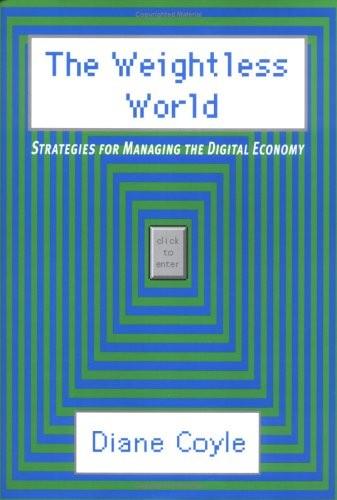
The Weightless World: Strategies for Managing the Digital Economy
by
Diane Coyle
Published 29 Oct 1998
The net impact of labour-saving technical change on jobs depends on the size of these effects, on the speed with which the new technology spreads and is absorbed by different companies, on how easy it is for new firms to start up and for workers to switch jobs, and on the general economic policy framework. A good education system, competitive industries, flexible labour markets and expansionary macroeconomic policies will tend to favour net job creation rather than destruction. The structure of the economy is also crucial. Countries that have a history of exporting electronic products for which demand is growing faster than incomes in its markets will do a lot better out of new technologies than those countries that tend to import those items or traditionally export old-fashioned goods to stagnant markets.
…
Many people who place themselves on the left of the political spectrum or who adhere to the Euro- The Weightless World 90 pean social tradition will not concede defeat on the questions of income equality and social protection. Those of us with the same political roots, for whom that insistence means conceding defeat on the expansion of opportunities for work and growth instead, can only feel ambivalent about flexibility. Having a flexible labour market is all about transferring the risks of profound industrial and economic change from governments and companies to individuals. This is a planetary phenomenon. In newly industrialised South Korea 1997 dawned with mass protests by workers employed by the chaebol, the country’s huge industrial conglomerates.
…
It does not show up in the figures as much as you might expect — to the delight of the free-market ideologues criticised by George Soros. For example, redundancies are much lower than they were at the depths of the 1980s recession. Job tenure — the typical amount of time an employed person has been in their job — has fallen, but only a little. The flexible labour market has several dimensions. One is the risk of becoming unemployed and staying unemployed. Another is the number and kinds of job available to those hunting for work. Then there is the issue of the quality of work. One sign this might have diminished is the increase in parttime and temporary jobs.

Basic Income And The Left
by
henningmeyer
Published 16 May 2018
The fact that it would also take a lot of households off means101 tested benefits, and that it would provide every indi‐ vidual and every household with a solid financial floor on which they could build, would be to take the first steps towards a tax and benefits system appropriate to the flexible labour market and house‐ hold structures of the twenty-first century. The reduction in the number of means-tested benefits 15 UBI: A BAD IDEA FOR THE WELFARE STATE BY BO ROTHSTEIN (23 NOVEMBER 2017) claims would deliver an administrative saving greater than the administrative cost of Citizen’s Incomes, which would be simpler to administer than Child Benefit.

The Economics of Belonging: A Radical Plan to Win Back the Left Behind and Achieve Prosperity for All
by
Martin Sandbu
Published 15 Jun 2020
It is paradoxical that the most liberalised labour markets in the West (typically the English-speaking countries) and the most heavily regulated ones (the “Latin” countries: France and southern Europe) have both seen the emergence of a “precariat”—an underclass of workers trapped in erratic, unpredictable, and impoverishing conditions. In “flexible” labour markets, this is because they permit workers to be hired with little job security and no guarantee of minimum hours worked (or paid for), sometimes known as zero-hours contracts. In conjunction with the disappearance of union-regulated factory jobs, this has naturally made insecure work more prevalent.
…
To circumvent constraints on flexibility, employers have increasingly preferred to create temporary positions. This has created a deep division between “insiders”—who benefit from job protection—and a large minority of “outsiders” who can only get short-term contracts or no work at all (these countries have higher unemployment rates than those with flexible labour markets even in good economic times). In France, for example, more than 80 per cent of workers have typically been covered by permanent contracts. But in 2015, only 16 per cent of new hires were. (Since then, labour market reforms have made a big difference—I return to this later in the book.) In Spain, Italy, and Portugal, almost all new jobs in the post–financial crisis recovery have been on short-term contracts—sometimes as short as one week.8 In 2014, one-quarter of all Spanish workers were in temporary work, and seven out of ten young workers.
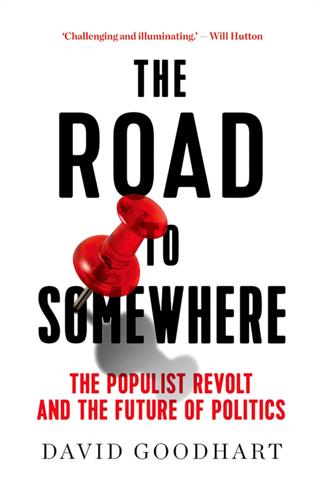
The Road to Somewhere: The Populist Revolt and the Future of Politics
by
David Goodhart
Published 7 Jan 2017
This was not just a passing fad, more than a decade later in 2006 in Gordon Brown’s penultimate budget speech he actually predicted there would be just 600,000 low-skill jobs by 2020. This was an extraordinary piece of wrong-headed conventional wisdom. The demand for low-skilled, and mainly low paid, jobs has in fact been increasing in recent decades, stimulated by a host of factors: Britain’s flexible labour market, privatisation, the contracting out of so many jobs by big companies, the disappearance of a high wage floor in some sectors once sustained by unions and wages councils, the introduction of a more comprehensive tax credit income supplement system in 1999, the high demand for part-time work from working mothers, and, since 2004, the inflow of large numbers of eastern Europeans with a generally high work ethic and low wage expectations.
…
Although much of the political class and media has focused on inequality, sluggish social mobility and job insecurity (symbolised by zero-hours contracts) as the original sins of modern economic life all the survey evidence, both here and in the US, suggests that it is the idea that the Golden Age is behind us, rather than just ahead, and that children will not automatically live better lives than parents, that has caused most anxiety. Thanks to the relative weakness of organised labour and Britain’s flexible labour markets, the fall in economic activity caused by the financial crash led to lower incomes rather than significantly higher unemployment as was the case in most previous recessions. Real wages have been growing again in Britain since 2013 but fell by more than 10 per cent after 2007 and have not fully recovered.36 In June 2016 there were only two regions where GDP per head had returned to its pre-crisis peak—London and the south east—and at that date as many as half of all British households had had no increase in their take-home pay since 2005—the longest period of wage stagnation since the middle of the nineteenth century.
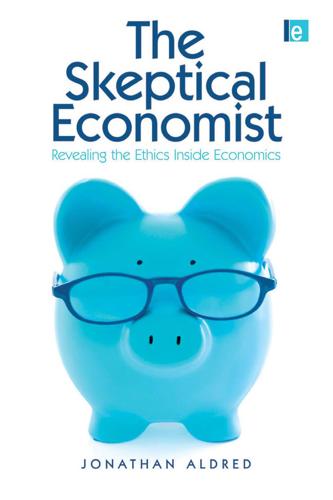
The Skeptical Economist: Revealing the Ethics Inside Economics
by
Jonathan Aldred
Published 1 Jan 2009
It has led to irreversible changes to our environment, such as the loss of species and unique habitats, and fossil-fuel emissions which make substantial climate change now unavoidable. It encourages governments to narrow the focus of education from a broad preparation for life to the development of skills which have economic value in markets. It lies behind every news report on the advantages of globalization, the need for labour market flexibility, and the pros and cons of US and European ‘economic models’. As these examples show, the pursuit of economic growth influences our everyday lives in countless ways, far beyond the intuitive idea that we all have a bit more cash to spare. None of this is to suggest that a zero-growth economy would be desirable.
…
Environmentalists and other radical critics have been warning for decades about the dire consequences of excessive growth, but their focus has been relentlessly negative. Happiness economics is more of a Pied Piper than a Prophet of Doom. It offers a positive vision for a better society. In case this sounds like an empty platitude, happiness economics has many concrete implications, such as recognizing that ‘labour market flexibility’ can bring misery through loss of job security and the erosion of communities as people move more frequently between jobs.62 Other implications include giving the reduction of unemployment relatively more priority, and low inflation relatively less;63 and the proposal outlined in Chapter 4, that income tax should be increased to reflect the ‘polluting’ effect of higher income on the happiness of others.64 The problem remains that self-reported happiness is too flimsy a justification for these ideas.
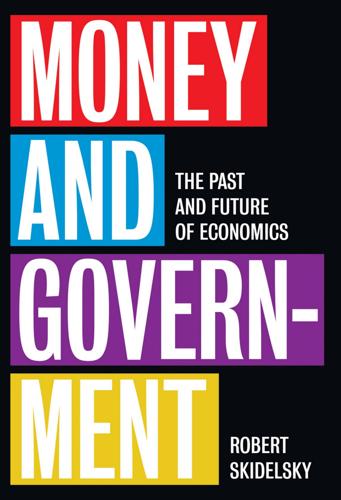
Money and Government: The Past and Future of Economics
by
Robert Skidelsky
Published 13 Nov 2018
This is because the unemployed in Europe got, not on their bikes, but on ships to the New World. Between 1881 and 1915, there was a net emigration of 32 million people from Western and Central Europe, about 15 per cent of its population, most of whom went to the thinly populated New World. The nonpersistence of unemployment fed the belief of the classical economists that, given flexible labour markets, unemployment would be transient. But this particular type of labour flexibility depended on having excess supplies of labour in one part of the world and excess supplies of land in another. 2. The predominantly commodity structure of international trade, and the low share of non-tradable services in domestic GDPs, meant that, on the whole, the law of one price prevailed, limiting the need for price adjustment.
…
Headline unemployment in Britain has fallen to just under 5 per cent, the lowest since 1975, but this excludes the millions of part-time workers who say they would work full-time if they could, those forced into precarious self-employment and on to zero-hour contracts, and those over-qualified for the jobs they do. The vaunted flexible labour market revealed by the recession has delivered a sizeable ‘jobs gap’. If we take just two categories – those claiming unemployment benefit and those of the employed who say they would work longer hours if such work was available – about 11 per cent of the British workforce is ‘under-employed’. 51 The opportunity to use available labour and cheap borrowing costs to build infrastructure was ignored: only 105,000 houses were built in Britain in 2011, the lowest number since the 1920s.
…
Quantitative easing increases it still further by creating asset bubbles. The problem the older generation of under-consumptionists drew attention to was the failure of real wages to keep pace with productivity. But a striking feature of the post-crash years has been the decline in productivity, as workers have moved to less productive jobs. Flexible labour markets, greatly lauded by the conventional wisdom, are bound to slow down productivity growth, because it is more efficient for employers to hire cheap labour than invest in capital, physical or human. This has been a job-rich, productivity-poor, recovery. 305 M ac roe c onom ic s i n t h e C r a s h a n d A f t e r , 2 0 0 7 – Moreover, the fall in worker productivity must lead to even greater income inequality, and, therefore (on the under-consumptionist argument), to even greater macroeconomic instability in future, as the economy relies even more heavily on debt.
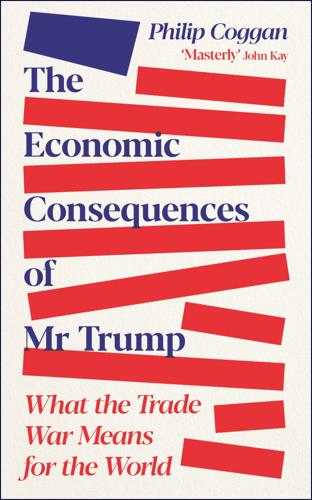
The Economic Consequences of Mr Trump: What the Trade War Means for the World
by
Philip Coggan
Published 1 Jul 2025
By and large, then, workers have fewer rights in the US than in other countries. In theory, this means the US labour market is more flexible and workers find it easier to get jobs. And it is certainly true that, in 2024, the US’s unemployment rate of 4.1 per cent was below the global average of 4.9 per cent.20 But this labour market flexibility hasn’t done a lot for manufacturing employment. In France, where labour rights are very strong, manufacturing jobs are 11 per cent of total employment;21 in the US, just 8 per cent. The UN produces a human development index which combines measures of national income, longevity and years spent in education.
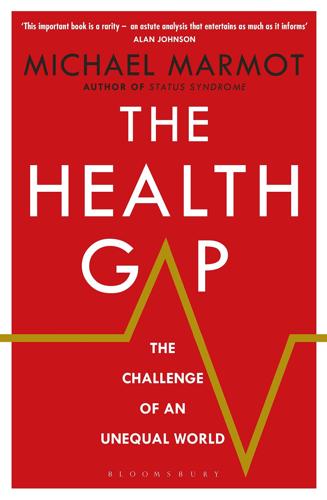
The Health Gap: The Challenge of an Unequal World
by
Michael Marmot
Published 9 Sep 2015
Greek government officials were either cooking the books or not keeping them, and the Greek population was practising tax avoidance on a grand scale. All that said, the policies thrust on them by the troika of the European Commission, the European Central Bank and the IMF are damaging the health of the Greek population. Job insecurity and health Job insecurity is supposed to be a good thing. It’s called labour market flexibility. Jobs for life? Stultifying, for the individual and the firm. At least that is the conventional wisdom. If workers are insecure they will be kept on their toes, work harder. I saw a cartoon at one workplace: ‘The beatings won’t cease until morale improves.’ When I presented evidence at a meeting that, in Spain, workers in insecure jobs had higher risk of mental illness than those in secure jobs I was greeted with the inevitable question: have you thought about causation?
…
K., here Gandhi, Mahatma, here, here gangs, here, here Gawande, Atul, here GDP, measurement of, here gender equity, move to, here General Motors, here Georgia, here Gershwin, George, here Glasgow, here, here, here, here, here, here, here combating gang violence, here life expectancy, here, here, here mortality rates, here Glass, Norman, here Gleneagles Summit, here Global Burden of Disease, here global warming, see climate change global wealth, increasing, here Gnarr, Jon, here Goldblatt, Peter, here golf, here Gordon, David, here, here, here, here Gornall, Jonathan, here Göteborg, here Great Gatsby Curve, here Greece, here, here financial crisis and austerity, here, here, here, here green space, here grooming, in apes, here, here Guardian, here Guinea-Bissau, here, here Gunbalanya, here, here, here Hacker, Jacob, here, here Haiti earthquake, here Hampshire, Stuart, here, here HAPIEE studies, here ul Haq, Mahbub, here Hayek, Friedrich von, here health advice, here health and safety regulations, here, here health and well-being boards, here health care systems, here health inequities (definition), here heart disease, here, here, here, here, here, here, here abolition of, here and adverse childhood experience, here, here in Australian aboriginals, here and civil servants, here, here, here and exercise, here and high status, here, here and Japanese migrants, here and job strain, here Hertzman, Clyde, here, here Heymann, Jody, here high blood pressure, here, here, here HIV/AIDS, here, here, here, here homicide, here, here, here Hong Kong, here, here HPA axis, here Human Development Index (HDI), here, here, here, here Hungary, here, here, here Hutton, Will, here Huxley, Aldous, here Hyder, Shaina, here Iceland, here, here, here, here, here ideology, here, here income inequalities, here, here, here, here, here, here India, here, here, here, here average BMI, here caste system and education, here child mortality, here, here, here cotton farmers, here distrust of education system, here income inequalities, here life expectancy, here, here, here, here, here literacy, here scavengers, here, here, here, here see also Kerala infant mortality, here inherited wealth, here Institute of Economic Affairs, here intergenerational earnings elasticity, here International Federation of Medical Students’ Associations, here International Labour Office (ILO), here, here, here, here International Monetary Fund (IMF), here, here, here, here, here, here, here, here, here and impact of structural adjustments, here Ireland, here, here, here, here Israel, here Italy, here, here fertility rate, here maternal mortality, here Jakab, Zsuzsana, here Japan, here, here, here, here life expectancy, here, here, here and team commitment, here, here Japanese-Americans, here, here Jordan, here Judt, Tony, here, here, here Kahneman, Danny, here Kalache, Alex, here, here Karasek, Robert, here Kelly, Yvonne, here Kennedy, Robert, here, here, here Kenya, here, here Kerala, here, here Keynes, John Maynard, here Keynesian economics, here, here, here, here Kibera slum, here King’s Fund, here Kivimaki, Mika, here Kokiri Marae, here, here Krueger, Alan, here Krugman, Paul, here, here Kuznets, Simon, here Labonté, Ron, here labour market flexibility, here Lalonde, Christopher, here Laos, here latency effect, here Lativa, here Lee, J. W., here Lewis, Michael, here Lexington, Kentucky, here libertarians, here, here life expectancy, here, here, here, here among Australian aboriginals, here disability-free, here, here and education, here, here, here, here in former communist states, here and mental health, here and national income, here US compared with Cuba, here Lithuania, here, here, here Liverpool, here, here, here ‘living wage’, here loans, low-interest, here lobbying, here Los Angeles, here ‘lump of labour’ hypothesis, here Lundberg, Ole, here lung cancer, here, here lung disease, here, here, here, here luxury travel, here Macao, here, here McDonald’s, here McMunn, Anne, here Macoumbi, Pascoual, here Madrid, indignados protests, here, here Maimonides, here malaria, here, here, here, here, here Malawi, here male adult mortality, here, here Mali, here, here Malmö, here, here Malta, here Manchester, here, here, here Maoris, here, here, here, here Marmot Review, see Fair Society, Healthy Lives marriage, here Marx, Karl, here maternal mortality, here, here, here maternity leave, paid, here Matsumoto, Scott, here Meaney, Michael, here Medicaid, here Mediterranean diet, here Mengele, Joseph, here mental health, here, here, here, here, here, here, here and access to green space, here and adverse childhood experience, here and austerity, here and fear of crime, here and job insecurity, here and unemployment, here meritocracy, here Mexico, here, here, here, here, here education and cash transfers, here, here Millennium Birth Cohort Study, here, here Minimum Income for Healthy Living, here, here, here Mitchell, Richard, here Modern Times, here Morris, Jerry, here, here Moser, Kath, here Mozambique, infant mortality, here Mullainathan, Sendhil, here Murphy, Kevin, here, here Muscatelli, Anton, here Mustard, Fraser, here Mwana Mwende project, here Nathanson, Vivienne, here Native Americans, here Navarro, Vicente, here NEETs, here, here neoliberalism, here, here, here, here, here Nepal, here, here Neruda, Pablo, here Netherlands, here, here New Guinea, here, here NEWS group, here, here Nietzsche, Friedrich, here, here Niger, here nitrogen dioxide, here, here non-human primates, here Nordic countries and commission report, here and social protection, here, here, here, here, here see also individual countries Norway, here, here, here, here, here, here life expectancy and education, here, here Nottingham, here Nozick, Robert, here obesity, here, here, here, here, here, here, here, here in children, here, here and diabetes, here and disincentives, here food corporations and, here genetic and environmental factors in, here and migrant studies, here and rational choice theory, here social gradient in, here, here, here, here in women, here, here Office of Budget Responsibility, here Olympic Games, here opera, here Organisation for Economic Co-operation and Development (OECD), here, here, here, here, here, here, here organisational justice, here Orwell, George, here Osler, Sir William, here Panorama, here Papua New Guinea, here ‘paradox of thrift’, here Paraguay, here, here, here parenting, here, here, here, here and work–life balance, here pay, low, here pensions, here, here, here, here Perkins, Charlie, here Peru, here, here, here physical activity and cognitive function, here green space and, here Pickett, Kate, here Pierson, Paul, here, here Piketty, Thomas, here, here, here, here Pinker, Steven, here Pinochet, General Augusto, here PISA scores, here, here, here, here, here Poland, here, here, here, here Popham, Frank, here Porgy and Bess, here poverty, here, here, here, here, here, here, here and aboriginal populations, here, here absolute and relative, here, here child poverty, here, here, here, here, here and choice, here and early childhood development, here, here effect on cognitive function, here and urban unrest, here and work, here Power, Chris, here pregnancy, here preventive health care, here ‘proportionate universalism’, here puberty, and smoking here public transport, here, here, here, here, here, here, here, here Ramazzini, Bernardino, here RAND Corporation, here, here, here rational choice theory, here, here, here rats, and brain development, here Rawls, John, here, here Reid, Donald, here Reinhart, Carmen, here, here reproduction, control over, here retirement, here reverse causation, here Reykjavik Zoo, here Rio de Janeiro, here, here Rogoff, Kenneth, here, here Rolling Stones, here Romania, here Romney, Mitt, here Rose, Geoffrey, here Roth, Philip, here Royal College of Physicians, here Royal Swedish Academy of Science, here Russia, here, here, here and alcohol use, here life expectancy, here, here, here, here Sachs, Jeffrey, here, here St Andrews, here San Diego, here Sandel, Michael, here, here Sapolsky, Robert, here Scottish Health Survey, here Seattle, here Self Employed Women’s Association (SEWA), here, here, here, here Sen, Amartya, here, here, here, here, here, here, here, here, here, here, here and Jean Drèze, here, here, here, here serotonin, here sexuality, here, here see also reproduction, control over sexually transmitted infections, here, here Shafir, Eldar, here Shakespeare, William, here, here, here, here Shanghai, here Shaw, George Bernard, here, here Shepherd, Jonathan, here shootings, here Siegrist, Johannes, here Sierra Leone, here, here, here Singapore, here, here Slovakia, here Slovenia, here, here smallpox vaccinations, here Smith, Adam, here Smith, Jim, here smoking, here, here, here, here, here, here, here, here declining rates of, here, here and education, here and public policy, here social gradient in, here, here and tobacco companies, here and unemployment, here Snowdon, Christopher, here social cohesion, here, here, here, here, here, here, here social mobility, here, here social protection, here ‘social rights’, here Social Science and Medicine, here Soundarya Cleaning Cooperative, here South Korea, here, here, here, here Spain, here, here, here Spectator, here sports sponsorship, here Sri Lanka, here Stafford, Mai, here Steptoe, Andrew, here Stiglitz, Joseph, here, here, here, here, here stroke, here, here, here structural adjustments, here, here Stuckler, David, here suicide, here, here, here, here, here and aboriginal populations, here, here and Indian cotton farmers, here and unemployment, here, here suicide, attempted, here Sulabh International, here Sun, here Sure Start programme, here Surinam, here Sutton, Willie, here Swansea, here Sweden, here, here, here, here, here, here, here life expectancy and education, here, here male adult mortality, here, here Swedish Commission on Equity in Health, here Syme, Leonard, here, here, here Taiwan, here, here Tanzania, here taxation, here Thailand, here Thatcher, Margaret, here Theorell, Tores, here tobacco companies, here Topel Robert, here Tottenham riots, here Tower Hamlets, here, here Townsend, Peter, here trade unions, here, here, here, here traffic calming measures, here Tressell, Robert, here ‘Triangle that Moves the Mountain’, here, here trickle-down economics, here, here Truman, Harry S., here tuberculosis, here, here, here, here Tunisia, here Turandot, here, here Turkey, here, here Uganda, here, here unemployment, here, here, here, here, here, here, here and mental health, here and suicide, here, here youth unemployment, here, here, here, here UNICEF, here, here United Kingdom alcohol consumption, here capital:income ratio, here and child well-being, here cost of childcare, here and economic recovery, here, here education system, here, here disability-free life expectancy, here founding of welfare state, here health-care system, here income inequalities, here, here literacy levels, here male adult mortality, here PISA score, here politics and economics, here and poverty in work, here, here poverty levels, here, here prison population, here social attitudes, here and social interventions, here social mobility, here ‘strivers and scroungers’ rhetoric, here, here and taxation, here unemployment, here use of tables for meals, here United Nations Development Programme (UNDP), here, here, here, here United States of America air pollution, here, here alcohol consumption, here capital:income ratio, here child poverty, here and child well-being, here cotton subsidies, here and economic recovery, here education system, here, here, here female life expectancy, here and gang violence, here health-care system, here, here income inequalities, here, here, here, here international comparisons, here, here, here lack of paid maternity leave, here life expectancy and education, here male adult mortality, here, here, here maternal mortality, here, here obesity levels, here, here, here, here PISA score, here politics and economics, here and poverty in work, here poverty levels, here prison population, here race and disadvantage, here, here, here, here, here social disadvantage and health, here social mobility, here suicide rate, here and taxation, here US Centers for Disease Control and Prevention, here US Department of Justice, here US Federal Reserve Bank, here US National Academy of Science (NAS), here, here, here, here University of Sydney, here urban planning, here Uruguay, here, here, here, here utilitarianism, here, here, here Vågerö, Denny, here valuation of life, here Victoria Longitudinal Study, here Vietnam, here, here violence, here domestic (intimate partner), here, here, here Virchow, Rudolf, here vulture funds, here, here Wales, youth unemployment in, here walking speed, here Washington Consensus, here, here, here welfare spending, here West Arnhem College, here Westminster, life expectancy in, here Whitehall Studies, here, here, here, here, here, here, here wife-beating, here Wilde, Oscar, here, here Wilkinson, Richard, here willingness-to-pay methodology, here, here Wolfe, Tom, here, here women and alcohol use, here and cash-transfer schemes, here A Note on the Author Born in England and educated in Australia, Sir Michael Marmot is Professor of Epidemiology and Public Health at UCL.
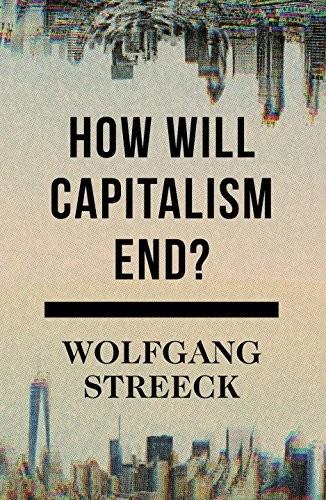
How Will Capitalism End?
by
Wolfgang Streeck
Published 8 Nov 2016
If this continues, the Southerners will have no choice but to adapt their political and economic institutions to the neoliberal version of the European monetary regime as authoritatively interpreted by the North.29 The outcome of such an adjustment process would be unknown; even if all went well, it would entail a lengthy transition period, full of political unrest and economic uncertainty. It would mean, for example, that the South would have to accept fully ‘flexible’ labour markets, à la the North; while in the opposite eventuality the Germans would be forced to abandon their ‘destructive’ saving habits and give up their ‘selfish’ export-based economy. The market struggle is thus displaced onto the second question: the institutional ‘reforms’ required of member states.
…
As female participation increased, trade union density declined, unemployment become endemic, strikes ‘withered away’ and wage pressure on profits were relieved. More often than not employers managed to enlist women as allies in a fight for deregulation of employment, as both had reasons to push for ‘flexible’ labour markets allowing ‘outsiders’, typically female, to compete effectively with, typically male, ‘insiders’.36 In the course of the liberalization of both markets and social life, the abolition of the family wage coincided with increasingly precarious family relations to make paid employment, even at deteriorating conditions, an economic necessity for women, including the rising number of single women with children.

Value of Everything: An Antidote to Chaos The
by
Mariana Mazzucato
Published 25 Apr 2018
Glyn, Capitalism Unleashed, p. 7. 45. T. Piketty, Capital in the Twenty-First Century (Cambridge, MA: Belknap Press, 2014), p. 438. 46. Source: A. Haldane, Labour's Share (London: TVC, 12 November 2015), p. 32, adapted from J. P. Pessoa and J. Van Reenen, ‘The UK productivity and jobs puzzle: Does the answer lie in labour market flexibility?', Centre for Economic Performance Special Paper 31 (2013), compared to 65-70 per cent during similar periods at the end of the 1960s and during the 1980s. 47. Source: author's elaboration from: piketty.pse.ens.fr/capital21c 48. https://www.oxfam.org/sites/www.oxfam.org/files/file_attachments/bp2 economy-one-percent-tax-havens-180116-summ-en_0.pdf 49.
…
ECIPE Occasional Paper no. 1, 2012 (Brussels: The European Centre for International Political Economy): http://eprints.lse.ac.uk/41902/ Oxfam, An Economy for the 1%, Oxfam Briefing Paper, January 2016: https://www.oxfam.org/sites/www.oxfam.org/files/file_attachments/bp21 economy-one-percent-tax-havens-180116-en_0.pdf Oxfam, An Economy for the 99%, Oxfam Briefing Paper, January 2017: https://www.oxfam.org/sites/www.oxfam.org/files/file_attachments/bp- economy-for-99-percent-160117-en.pdf Palin, A., ‘Chart that tells a story - UK share ownership', Financial Times, 4 September 2015: https://www.ft.com/content/14cda94c-5163-11e5-b029-b9d50a74fd14 Perez, C., ‘Capitalism, technology and a green global golden age: The role of history in helping to shape the future', in Jacobs, M. and Mazzucato, M. (eds), Rethinking Capitalism: Economics and Policy for Sustainable and Inclusive Growth (Chichester: Wiley-Blackwell, 2016). Pessoa, J. P. and Van Reenen, J., ‘The UK productivity and jobs puzzle: Does the answer lie in labour market flexibility?', Centre for Economic Performance, Special Paper no. 31 (2013). Petty, W., A Treatise of Taxes and Contributions (London: 1662), in Charles Henry Hull (ed.), The Economic Writings of Sir William Petty, 2 vols (Cambridge: University Press, 1899). Petty, W., Several Essays in Political Arithmetick (London: 1699), in Charles Henry Hull (ed.), The Economic Writings of Sir William Petty, 2 vols (Cambridge: University Press, 1899).

The European Union
by
John Pinder
and
Simon Usherwood
Published 1 Jan 2001
It was only after Labour’s election victory in 1997 that there was unanimous agreement to convert the protocol into a social chapter in the Amsterdam Treaty; and it was accompanied by a new chapter aimed at achieving ‘a high level of employment and of social protection’. But Britain has continued to promote the cause of flexible labour markets, an objective that was taken up in the 2000 Lisbon Agenda and its successor, the 2010 ‘Europe 2020’, which brought together social policy with employment policy in a combination that was much more oriented to the use of economic growth to provide for social well-being. Flexibility or regulation in labour markets Britain has emphasized deregulation and flexibility in its approach to the EU, on the grounds that it will make the European economy more competitive and increase employment.
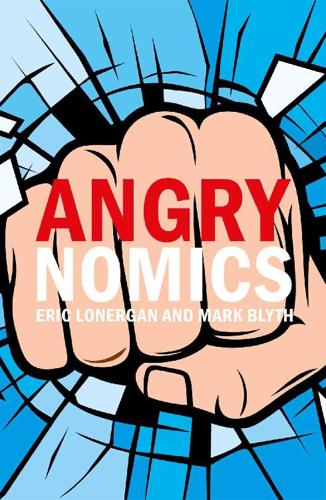
Angrynomics
by
Eric Lonergan
and
Mark Blyth
Published 15 Jun 2020
Technology has been a huge facilitator of competition and disruption in lots of industries, not just in telecoms, but increasingly in retail and other sectors. So, the inequality we see in income and wealth has a mirror in the returns to capital itself. This is relevant to private anger because in highly flexible labour markets, firms with razor-thin margins who are extremely price sensitive will have strong incentives not to raise wages, and their survival will require a strong propensity to hire and fire. That goes someway to explaining low wage growth. As more and more sectors are affected by these forces, many of those stresses will be passed on to workers.

Why We Can't Afford the Rich
by
Andrew Sayer
Published 6 Nov 2014
Competitive markets supposedly reward efficiency and penalise inefficiency and thereby ‘incentivise’ us to improve. Governments and the public sector, by comparison, are claimed to be inferior at organising things – monopolistic and prone to complacency, inefficiency and cronyism. Governments should therefore privatise as much as possible. Financial markets should be deregulated and there should be ‘flexible labour markets’ – political code language for jobs in which pay can fall as well as rise and in which there is little security. Where parts of the public sector can’t be privatised, league tables should be established and individuals, schools, universities, hospitals, museums, and so on should be made to compete for funds and be rewarded or penalised according to their placing.
…
Up until the 1970s their returns were similar to those from shares in non-finance companies (less than 10% per year), but from then on they rose to well over 20%. That the banks chose to hand over so much of their enormous profits to shareholders at a time when they needed to build up their capital base speaks volumes about the irrationality of shareholder capitalism. In the 1980s, governments began to extol the virtues of ‘flexible labour markets’, a brilliant euphemism for reduced protection, bargaining power and security for workers and a race-to-the-bottom for cheaper labour. In this new environment, slow growth of wages and salaries meant that aggregate demand for goods and services also grew more slowly, making it harder for companies to make a profit from investment in new capacity and products.
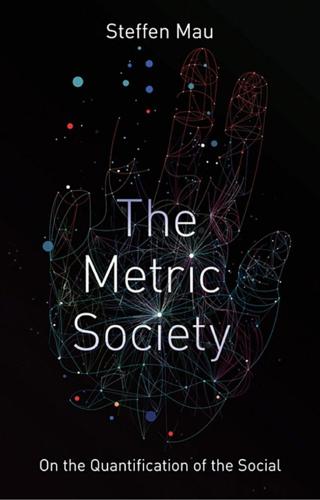
The Metric Society: On the Quantification of the Social
by
Steffen Mau
Published 12 Jun 2017
It is no secret that the assessments of the large rating agencies are underpinned by certain model concepts of efficient and profit-driven economic activity. Appraisals of states, for example – which in turn influence the ratings of companies based there – invariably reflect paradigmatic concepts of monetary stability, unemployment, public debt or labour market flexibility that are embodied in hegemonic economic models. While the long-term impact of many of these indicators is much disputed, the fact that agencies subscribe to a particular notion of market efficiency makes them arbiters of what is assumed to be the right economic system. Since poor ratings make things worse for the ratee by acting as self-fulfilling prophecies, the raters often feel vindicated in their forecasts.
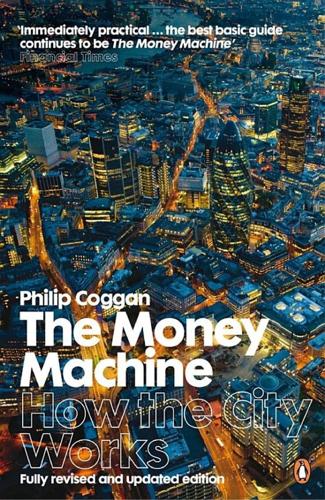
The Money Machine: How the City Works
by
Philip Coggan
Published 1 Jul 2009
The UK has been quite successful in attracting what is known as ‘direct investment’ from overseas companies: the building of factories, often in areas of high unemployment in Wales, Scotland or the North East. Politicians have argued that the UK has been successful in this quest because the government has cut taxes on corporate profits and because of more flexible labour markets (a euphemism for saying that companies face fewer problems in firing workers). Wider share ownership has also served the UK government’s purpose. The cost of providing state pensions is a great burden on European countries, with their ageing populations. The Conservative government of 1979–97 cut this cost substantially, by linking future pension payments to prices rather than earnings.
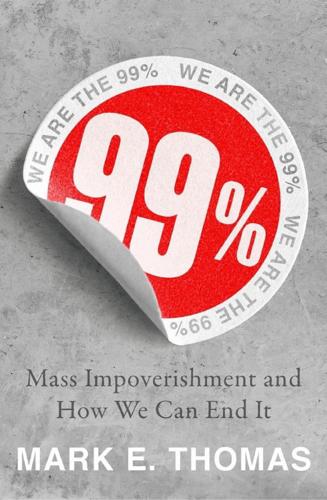
99%: Mass Impoverishment and How We Can End It
by
Mark Thomas
Published 7 Aug 2019
To answer this question, it can be helpful to look at migration’s impact in three areas – the labour market, the public purse and economic growth: Labour markets: • Migrants accounted for 47 per cent of the increase in the workforce in the United States and 70 per cent in Europe over the past ten years. • Migrants fill important niches both in fast-growing and declining sectors of the economy. • Like the native-born, young migrants are better educated than those nearing retirement. • Migrants contribute significantly to labour-market flexibility, notably in Europe. The public purse: • Migrants contribute more in taxes and social contributions than they receive in benefits. • Labour migrants have the most positive impact on the public purse. • Employment is the single biggest determinant of migrants’ net fiscal contribution. Economic growth: • Migration boosts the working-age population
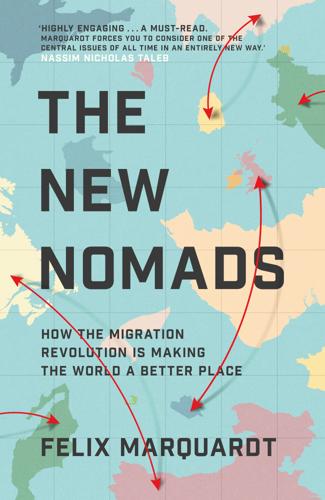
The New Nomads: How the Migration Revolution Is Making the World a Better Place
by
Felix Marquardt
Published 7 Jul 2021
There is always the possibility to go back home if things don’t work out. In the meantime, the way you will have grown, the things you will have learned, the experiences you will have made, the places, people and cultures you will have discovered… all those things are priceless.’ In the YGI, Norway topped the list, in no small part due to its flexible labour market. Norway is also not afraid of its young citizens crossing its borders to find work. In fact, Norway shares employment data with neighbouring Sweden, and when there is no job for a young person in one country, the government will fund their trip to interview for an open position in the other.

What's Wrong With Economics: A Primer for the Perplexed
by
Robert Skidelsky
Published 3 Mar 2020
Thus private ownership, if used for the general good, need not abrogate people’s ‘natural’ right to property in their own labour. In the Industrial Age workers claimed a ‘right to work’ as an equivalent to a right to property ownership. Neoclassical economics evaded this claim by assuming full employment. Sufficiently flexible labour markets would guarantee everyone who wanted it a job. Unemployment was assumed to be a choice for leisure, carrying with it no right to income. Workers also claimed a fair share of the surplus. Marx, as we have seen, denied this was possible under capitalism. Left-leaning neoclassical economists like Arthur Pigou (1877–1959) tried to establish a scientific case for income redistribution.
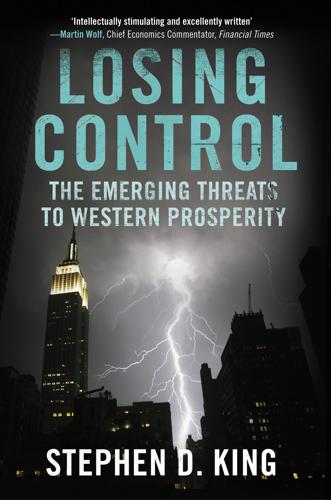
Losing Control: The Emerging Threats to Western Prosperity
by
Stephen D. King
Published 14 Jun 2010
This is a true issue of economic scarcity. At the individual country level, markets can adjust. A shortage of workers will push up real wages. Potential retirees may, as a result, choose to delay their retirement. Other workers may choose to work longer hours. Perhaps policymakers will deliver more flexible labour markets by encouraging more part-time work, increasing the provision of crèches and by adopting a more explicit ‘hire and fire’ mentality (the risk to a company of hiring a worker is reduced if workers can more easily be fired, thereby increasing the demand for workers and, hence, lowering the structural rate of unemployment).
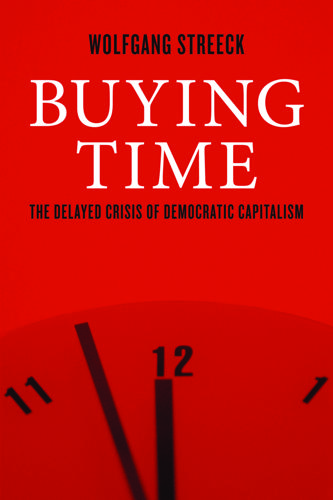
Buying Time: The Delayed Crisis of Democratic Capitalism
by
Wolfgang Streeck
Published 1 Jan 2013
In accordance with the neoliberal programme, the euro thus eliminated a major element of political discretion from the constitution of the common market; member-state governments concerned for the employment, prosperity and social security of their citizens would now have to turn to the instrument of internal devaluation: that is, the raising of productivity and competitiveness through more flexible labour markets, lower wages, longer working hours, higher labour market participation, and a welfare state geared to recommodification. Today the introduction of the euro may serve to illustrate how, with a political-economic ideology having turned into a religion, a ‘frivolous experiment’ (Polanyi) following the prescriptions of standard economics is to reshape a highly heterogeneous transnational society into a market society, with no regard for its diverse structures, institutions and traditions.
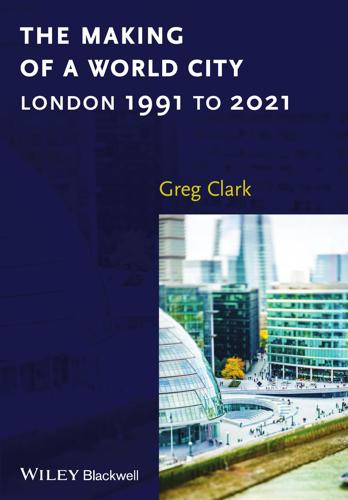
The Making of a World City: London 1991 to 2021
by
Greg Clark
Published 31 Dec 2014
Imperative 2: Jobs, incomes, and employability London needs to build a programme for new sectors in London to encourage investments that will catalyse target sectors and give them scale quickly. It should also use the welfare reform programme and growth deal framework to develop a new offer for employers and unemployed in London based on flexible labour market entry and participation. London’s labour market has evolved in unexpected ways which have perverse and unintended outcomes that must be tackled by focused leadership. Two substantial actions are required: address job creation in new sectors much more intensively and increase employability and aspirations amongst the poorest and least qualified London residents.
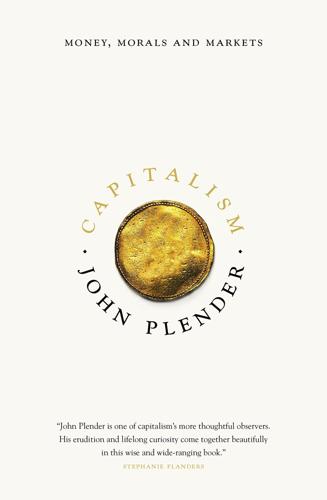
Capitalism: Money, Morals and Markets
by
John Plender
Published 27 Jul 2015
The laggards enjoyed rising living standards before 2007, despite stagnant real incomes, thanks only to increased borrowing on the security of their homes. The German sociologist Wolfgang Streeck rightly points out that subprime mortgages became a substitute, however illusory in the end, for social policy that was simultaneously being scrapped, as well as for wage increases that were no longer forthcoming at the lower end of a more flexible labour market.212 Since the crisis, however, American and British home owners have faced a long and deep squeeze on real living standards, while struggling to service an unprecedented level of indebtedness. At the same time, finance has become a mechanism for recycling resources from the rest of the economy into the pockets of a global super-rich elite.

Rethinking the Economics of Land and Housing
by
Josh Ryan-Collins
,
Toby Lloyd
and
Laurie Macfarlane
Published 28 Feb 2017
There may thus be a ‘fallacy of composition’ problem, common in macroeconomic theory, which insists on micro-foundations: while for any particular individual, owning a home may not materially affect their economic prospects, or, with rising house prices, actually benefit them, in aggregate across the economy higher levels of homeownership can be associated with lower labour market flexibility and productivity. Of course, there are also many other reasons why individuals may rationally prefer homeownership at the expense of productivity – such as security, status and the ability to live rent-free in older age. Exactly where the natural limit to the growth of private landed property might be remains impossible to say, not least because so many factors are in play.
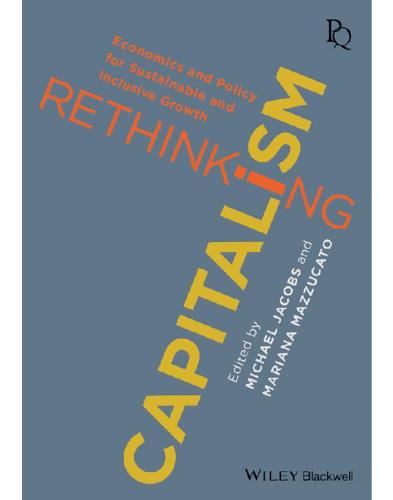
Rethinking Capitalism: Economics and Policy for Sustainable and Inclusive Growth
by
Michael Jacobs
and
Mariana Mazzucato
Published 31 Jul 2016
There is striking evidence—now gathered and acknowledged by the OECD and IMF—that economies with more equal distributions of income and wealth have stronger and more stable economic growth than those with greater inequality.56 Redistributive policies which reduce inequality are found to have in general a positive impact on growth.57 This creates a powerful case for the rebalancing of the distribution of earnings between capital and labour. Employees have in effect become too weak, as trade unions have lost powers and membership, and deregulated, ‘flexible’ labour markets have allowed employers to bargain wages and working conditions down. Crucially, as experience of legal minimum wages has shown, raising wages tends to force firms to invest in improving productivity, which strengthens economic performance.58 Public policy therefore has an important role in regulating labour markets, promoting both trade union membership and employee ownership of capital, and managing markets in housing and land.

Red Flags: Why Xi's China Is in Jeopardy
by
George Magnus
Published 10 Sep 2018
There is, nevertheless, some evidence to suggest there was a marked change in the rate of unemployment after the mid-1990s, before which the labour market was still tightly regulated. From the 1980s until then, which coincides with the emergence of the demographic dividend, the unemployment rate averaged 3.9 per cent, according to one study. From the mid-1990s until 2009, though, reforms to state-owned enterprises, privatisation and increased labour-market flexibility constituted an altogether different backdrop, against which the unemployment rate almost certainly rose, slowly at first, but reaching about 10.9 per cent in the period from 2002 to 2009 that ended with the financial crisis.8 A decade on, unemployment is lower, but it is also quite likely that it is, to some extent, hidden.
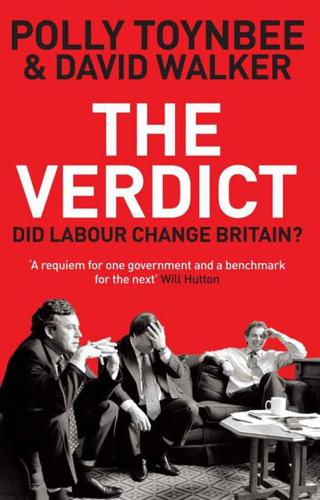
The Verdict: Did Labour Change Britain?
by
Polly Toynbee
and
David Walker
Published 6 Oct 2011
But Labour, desperate to register the effect of their measures, often misunderstood the marginal labour markets in and out of which the poor and unskilled moved, veering between work, semi-work and benefit. Two-thirds of each year’s new Jobseeker’s Allowance claims were repeats. Posts were often precarious, working for temp agencies, say, offering neither security nor promotion. The moral of the tale was that in Britain’s famously flexible labour market well-resourced intervention was needed to keep people in work. Visitors from abroad admired the 800 Jobcentre Plus offices resurrected from old employment and benefit offices, which forged better links with employers, put vacancies online and ‘actively managed’ their cases. Their rebuilding cost £314 million less than budget and, so the NAO said, the state did good business in recycling the offices no longer needed.

Head, Hand, Heart: Why Intelligence Is Over-Rewarded, Manual Workers Matter, and Caregivers Deserve More Respect
by
David Goodhart
Published 7 Sep 2020
And the school had a reasonable sense of what you needed to know to work in the dockyard. But then the dockyard closes, the steel works closes, the car plant has just gone bust. We don’t quite know what these 17 year olds are going to do but we are pretty sure it is not the old jobs in mass manufacturing. So they need some stuff that is broader and more flexible for a more flexible labour market.”25 General skills came to be regarded by much of the educational and political establishment in the United Kingdom and the United States as the most relevant education and training for a complex modern world. As Matthew Crawford, the American author, puts it in his book The Case for Working with Your Hands, the manual trades are now given little honor in the US school system because of “the fear that acquiring a specific skill set means that one’s life is determined.
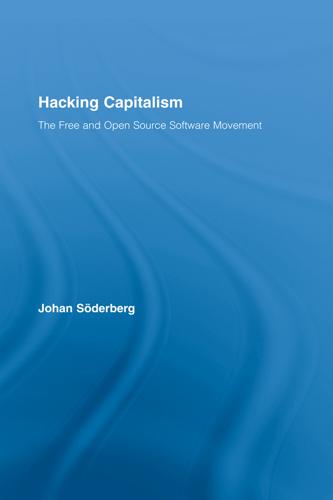
Hacking Capitalism
by
Söderberg, Johan; Söderberg, Johan;
Software mediation allows the single skill of using a computer program (for example Photoshop) to translate into other skills (operating the machine-language of the computer, the crafts of printmaking and type-setting). Thus computer literacy lessens some of the inertia of human training. It gives an edge to firms and individuals in flexible labour markets ruled by the imperative of ‘life-long learning’. And, of course, it undermines the position of skilled and organised labour. A case often referred to in labour theory is the union struggle in the printing industry during the mid twentieth century. Typographers had traditionally had a strong position based on their knowledge monopoly over the trade.
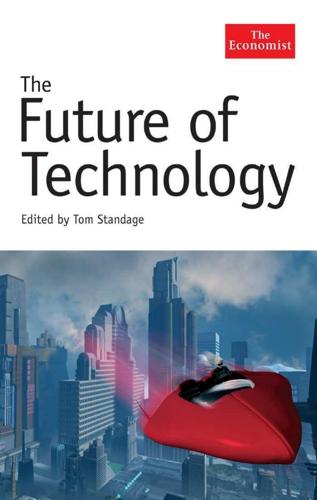
The Future of Technology
by
Tom Standage
Published 31 Aug 2005
He need not have worried. Today’s list of human desires includes instant messaging, online role-playing games and internet dating services, all unknown in the 1920s. And there will be many more tomorrow. 139 THE FUTURE OF TECHNOLOGY Sink or Schwinn Sourcing from low-cost countries works only in open and flexible labour markets. Europe’s are neither hen hal sirkin was growing up in 1960s America, the bicycle that every regular American child wanted was a Schwinn. In 1993, Schwinn filed for bankruptcy. The firm had been overtaken by imported Chinese bicycles. In 2001, a company called Pacific Cycle bought the Schwinn brand out of bankruptcy.

How to Change the World: Reflections on Marx and Marxism
by
Eric Hobsbawm
Published 5 Sep 2011
For them labour movements, labour parties and indeed public social welfare systems were nothing but obstructions of the free market which guaranteed maximal growth for profits and the economy and thus –the ideologists argued – of general welfare also. Ideally, they should be abolished, although in practice this proved impossible. ‘Full employment’ was now replaced by labour market flexibility and the doctrine of ‘the natural rate of unemployment’. This was also the period when nation-states retreated before the advance of the transnational global economy. In spite of their theoretical internationalism, labour movements were effective only within the enclosure of their state, chained to their nation-states, particularly in the state-steered mixed economies and welfare states of the second half of the twentieth century.

War and Gold: A Five-Hundred-Year History of Empires, Adventures, and Debt
by
Kwasi Kwarteng
Published 12 May 2014
True revolution ‘defied all of the overwhelming forces, interests, and impulses of American democracy’. The supply-side revolution was all about lower taxes. In Stockman’s simple formulation, higher taxes ‘caused less work’, while low tax rates ‘caused more’. More generally, ‘supply-siders’ favoured deregulation and labour-market flexibility, characterized as easier ‘hire and fire’ policies in order to boost production, or the supply side. This contrasted with the Keynesian emphasis on aggregate demand, often promoted by government spending, as a key driver of economic growth. As early as November 1981, Stockman became convinced that the Reagan administration had ‘locked the door on its own disastrous fiscal policy jail cell’ and had thrown away the key.

The Default Line: The Inside Story of People, Banks and Entire Nations on the Edge
by
Faisal Islam
Published 28 Aug 2013
In Middleton, David Moore suggests that less employment red tape would allow him to open more factories. This is a vexed question. But it is clear that in an industry that is becoming ever more just-in-time, and ever more flexible in demand and supply, there is a case to be made for trading jobs for labour-market flexibility. The tens of thousands of jobs created from this vision of a return of Cottonopolis will not necessarily be highly paid. If they do return, they may well do so on the basis of highly unpredictable patterns of internet-based demand. If Britain wants these jobs back onshore, then there may have to be a trade on pay or conditions, or the prices people pay in clothes shops and online.
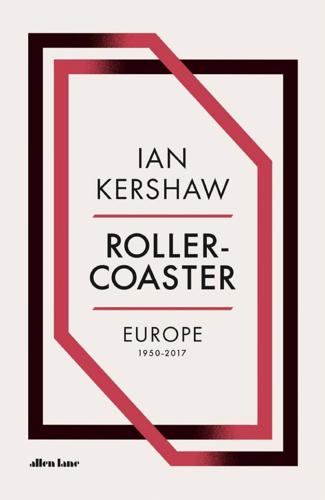
Roller-Coaster: Europe, 1950-2017
by
Ian Kershaw
Published 29 Aug 2018
Helmut Kohl’s government followed the general course of Western European governments under the impact of the second oil crisis in steps to curtail government expenditure (and especially limit the growth of social spending), while increasing economic competitiveness through deregulation, a more flexible labour market, tax incentives and privatization. Although this naturally alienated the left and brought about political protests, the government, keen to avoid an abrupt alteration of course, steered clear of any incisively radical change of direction. There was no attempt to turn back the clock on the social improvements made during the era of Brandt and Schmidt, or to interfere with the rights of trade unions.